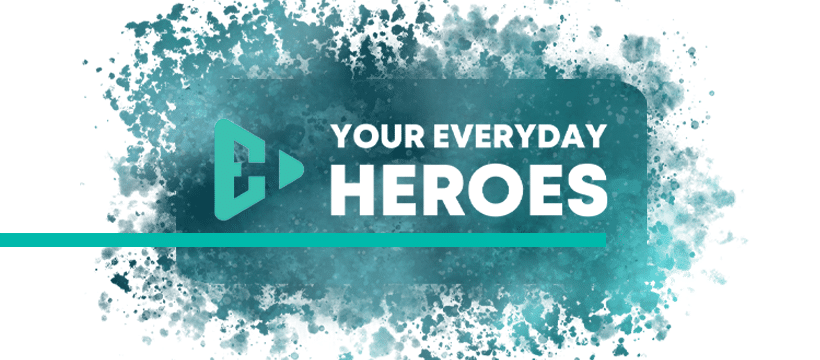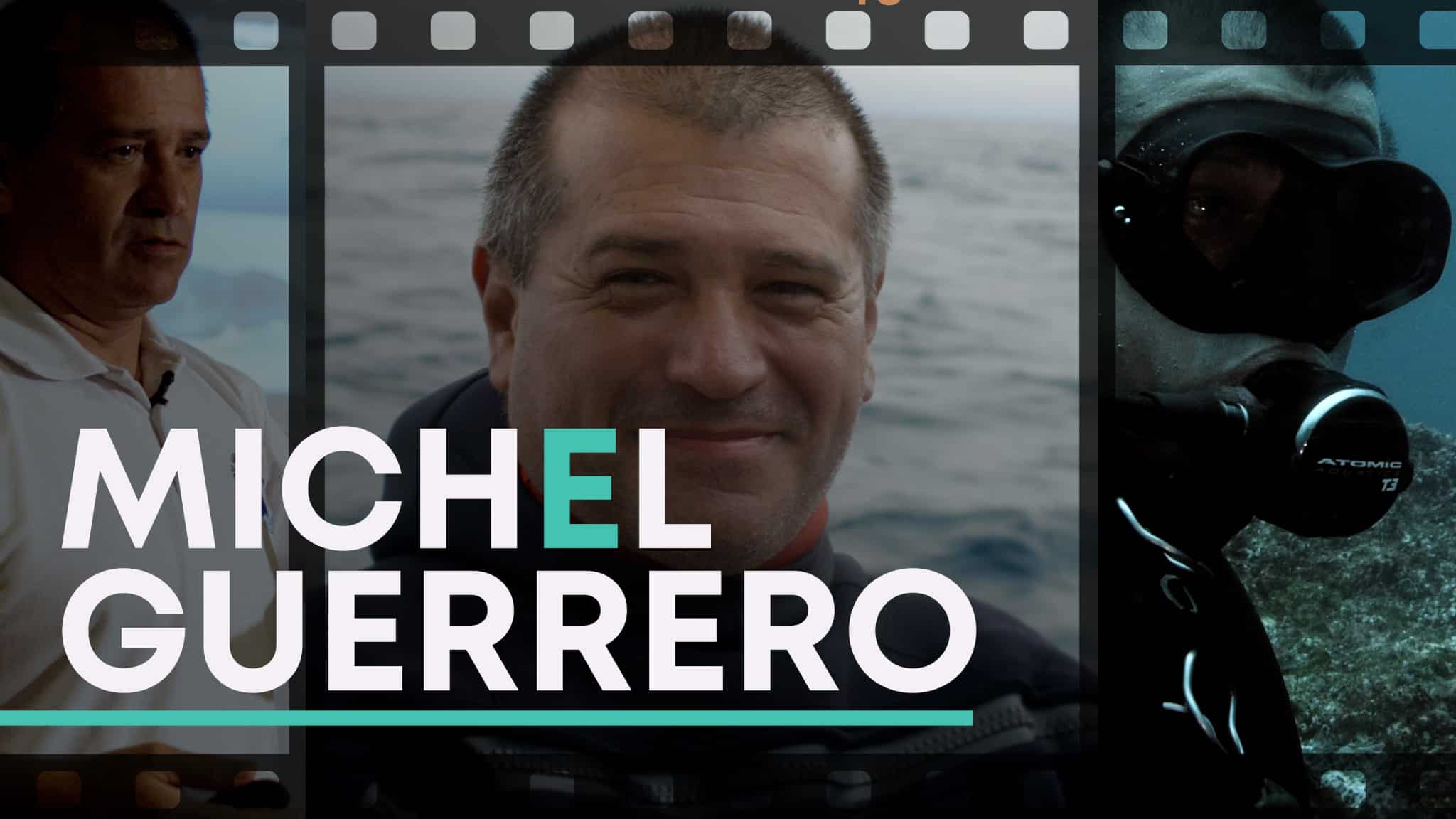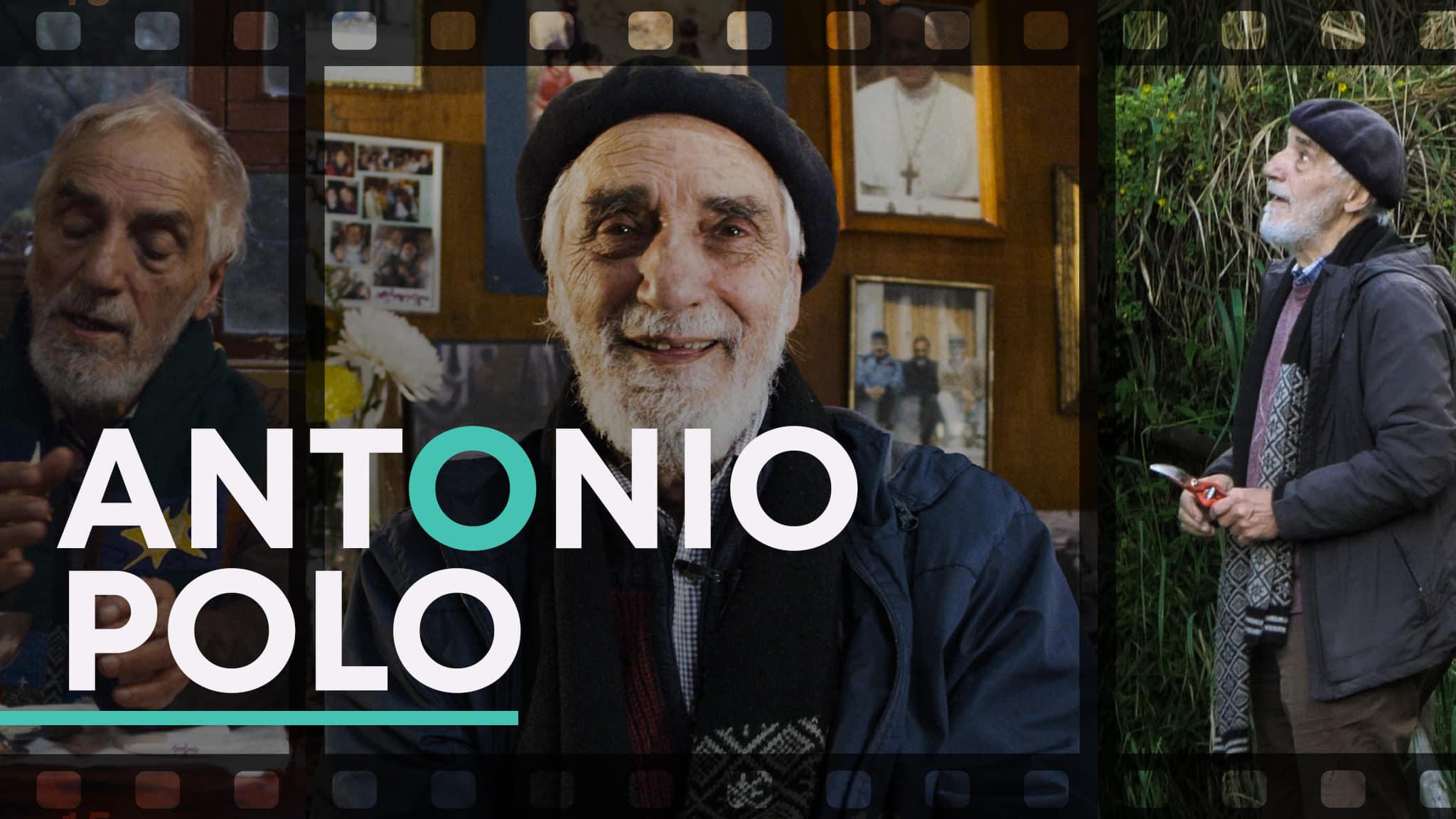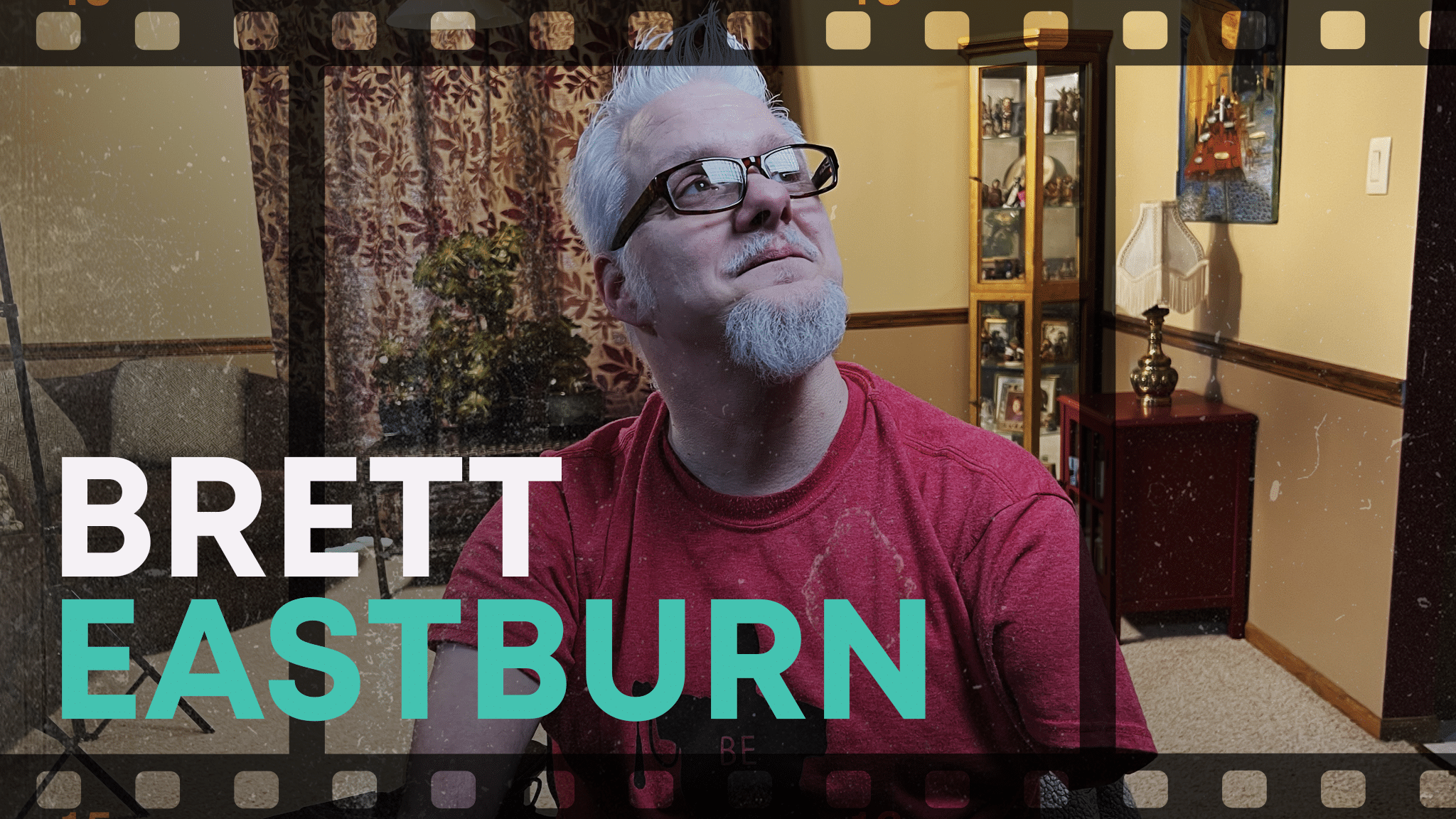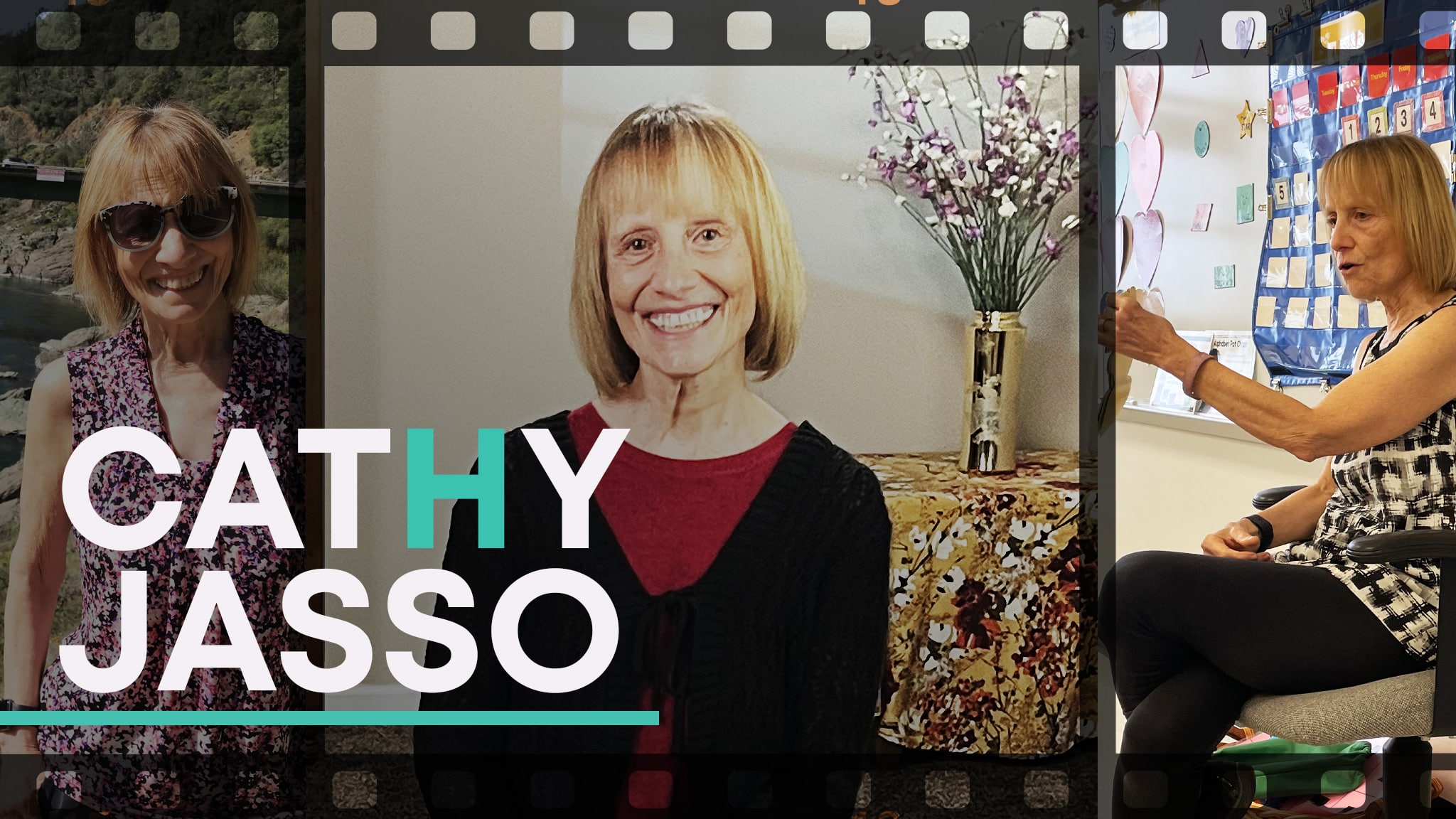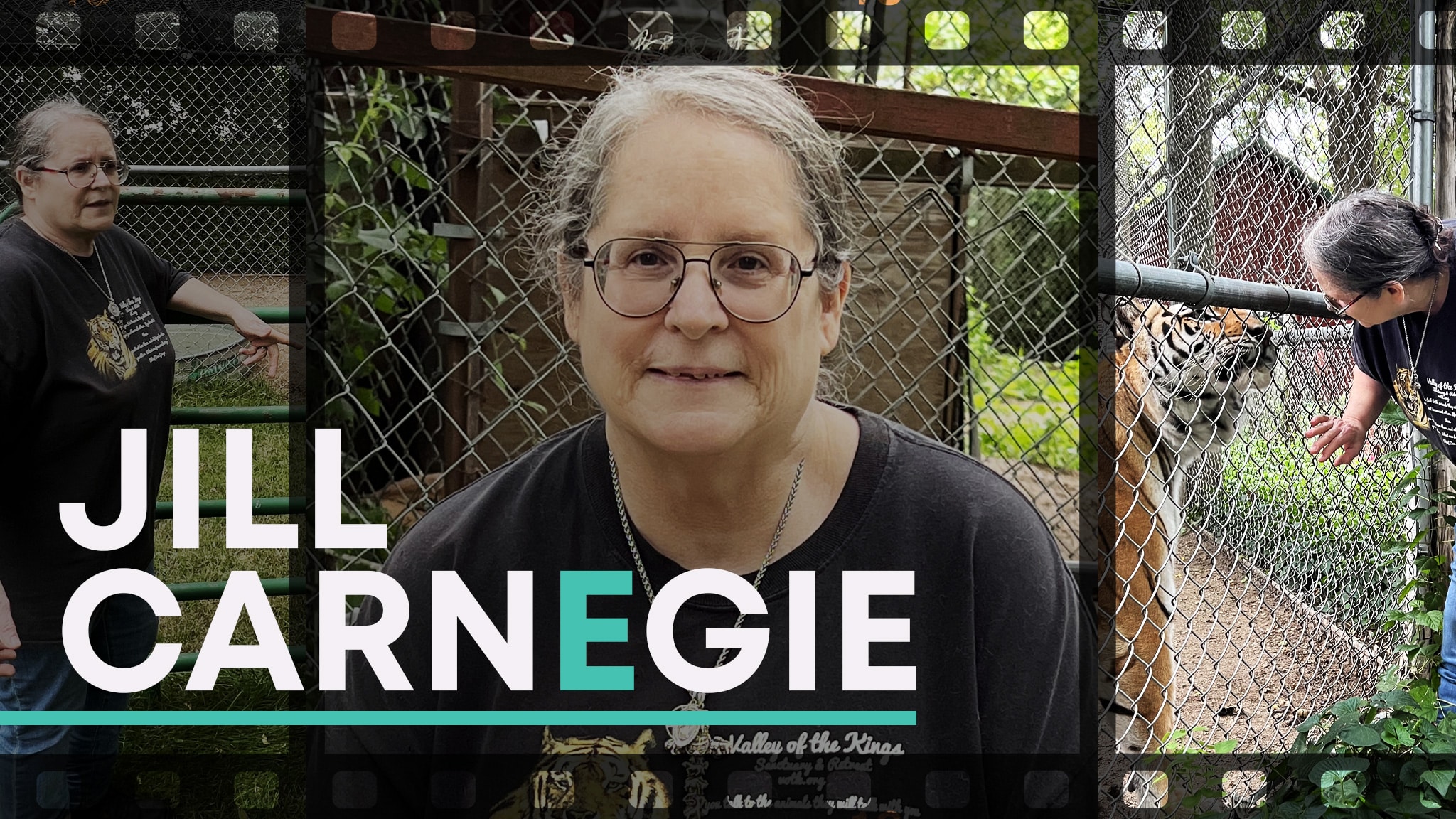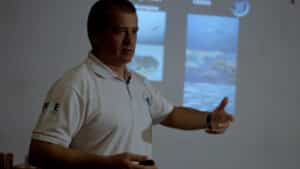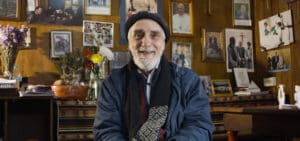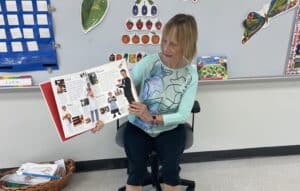The world is so bombarded with daily atrocities and catastrophic events, that the inspiring stories of hope, kindness, and human triumph often go unreported. However, there are just as many heartwarming tales of people who have dedicated their lives to serving others and their communities, as there are about those who cause criminal chaos.
We are dedicated to telling the inspiring stories of the everyday heroes who make the world a better place by rescuing animals, helping children, and saving the environment.
Meet The Everyday Heroes Inspiring Hope
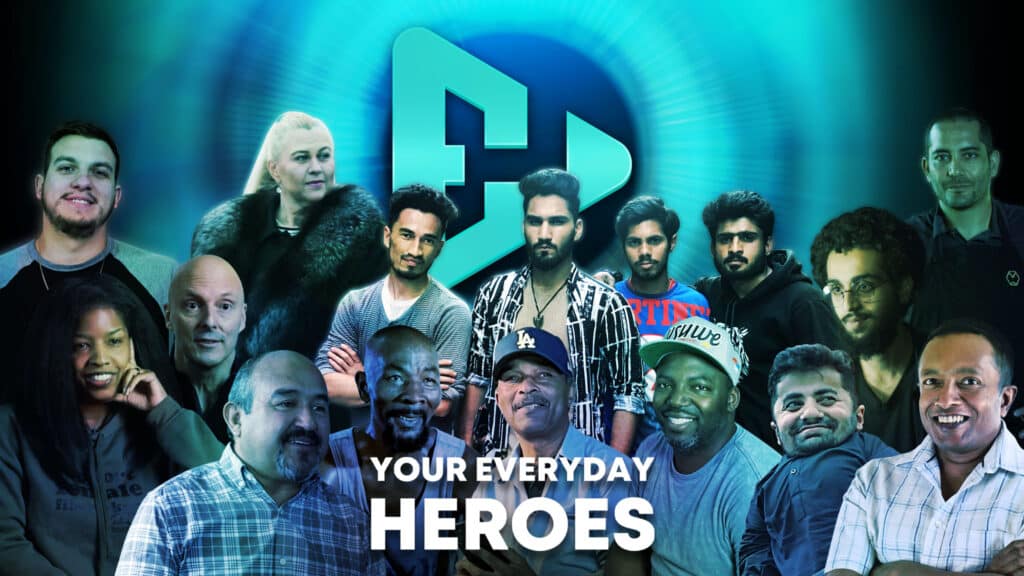
We have scoured the globe to find the people who have gone above and beyond to positively change the circumstances of the lives impacted by their chosen cause.
Our docuseries features the diverse tales of a woman who has dedicated her life to providing sanctuary to abused tigers, a celebrity chef who created an edible forest to feed his community, a missionary who created as self-sustainable town, an artist who paints murals of missing women in his city, and many more. These are there inspiring stories:
Jeremy Levine saves monkeys at Wild Sun Rescue
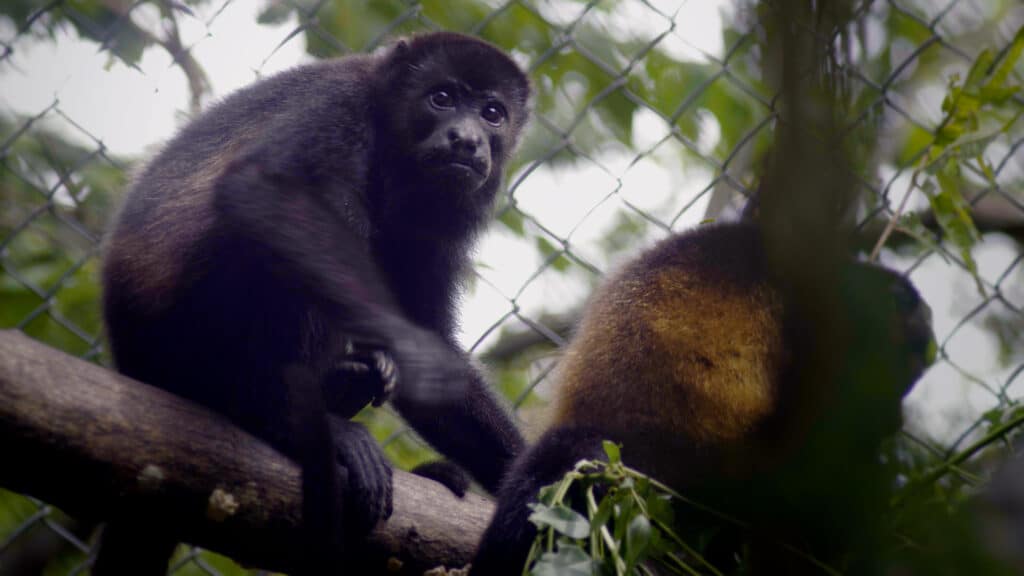
New Yorker Jeremy Levine moved to Costa Rica to open a school that taught Spanish, surfing, and yoga to international students. Though his business was highly successful, he wanted to give back to the country that had become his new home in a meaningful way.
The opportunity arose when the only local animal rescue center in the area closed down, despite an overwhelming need for its existence. Costa Rica is one of the most biodiverse places on the planet with around half a million species living in the country, which is around 5% of the estimated species in the world.
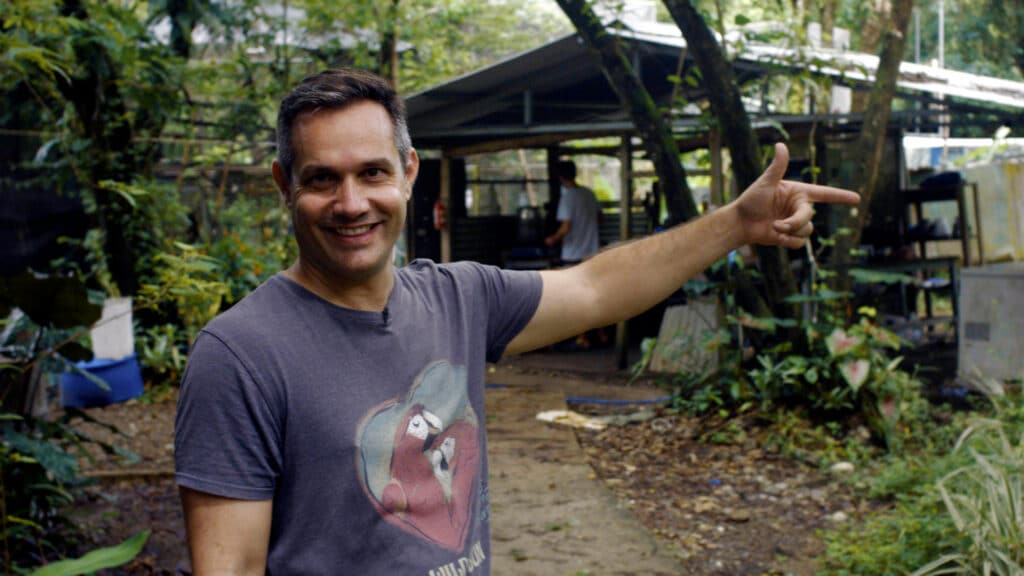
Despite the country’s award-winning approach to conservation, habitat destruction caused by humanity has put the wildlife in constant danger. Monkeys in particular are at constant risk due to Costa Rica’s insulated power lines, which are known to cause regular electrocutions when they climb on them as if they were trees in the forest.
Jeremy saw an opportunity to help nurse these injured animals back to health and re-release them into the wild, which he does in partnership with farmers who own 250-acres of jungle that they allow him to use as a wildlife conservatory.
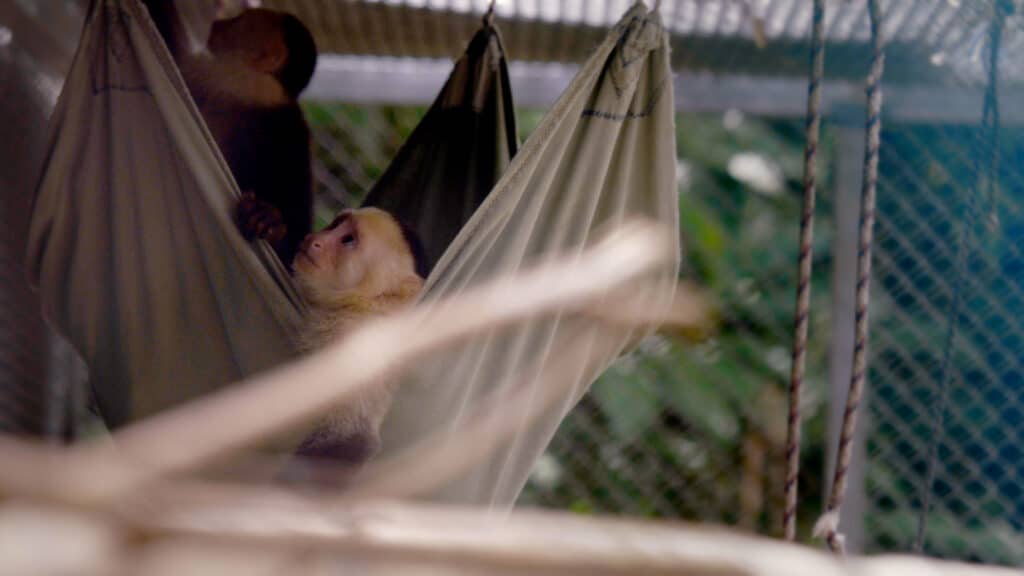
“I thought of myself as a 10 year-old,” he said about choosing to reopen the animal rescue center. “I would become what would’ve been my own hero when I was that age.”
Jeremy established Wild Sun Rescue more than 15 years ago and uses it to rescue and rehabilitate injured animals, primarily howler monkeys, who have lost most of their native habitat in Costa Rica.
He staffs Wild Sun by hosting internship programs for prospective biologists and veterinarians that get invaluable in-field experience in exchange for caring for the wounded monkeys.
Watch Jeremy Levine’s documentary: Rehabilitating Monkeys At Wild Sun Rescue
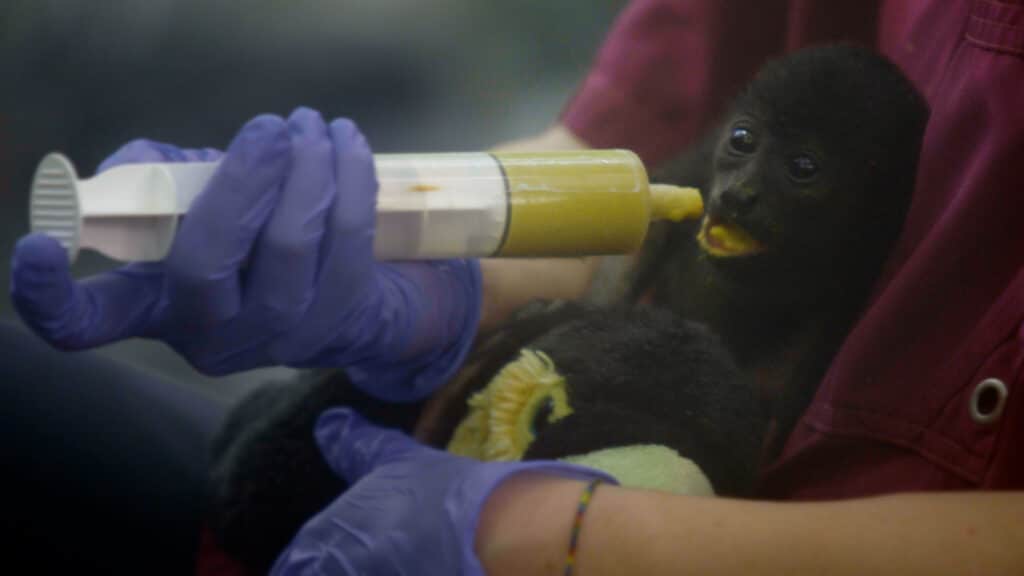
Jeremy funds the whole operation by creating other businesses that exist purely to finance the rescue. He founded a hotel and is opening a restaurant for this very purpose.
“Raising funds is tricky,” he remarked. “We’ve amassed supporters through our Patreon page, from which we make around $2,600 a month. But our expenses are around $20,000 a month. We currently need more enclosures, better salaries for employees, and better vet equipment.”
Tracey Lemon is protecting Tambor Bay’s sea turtles
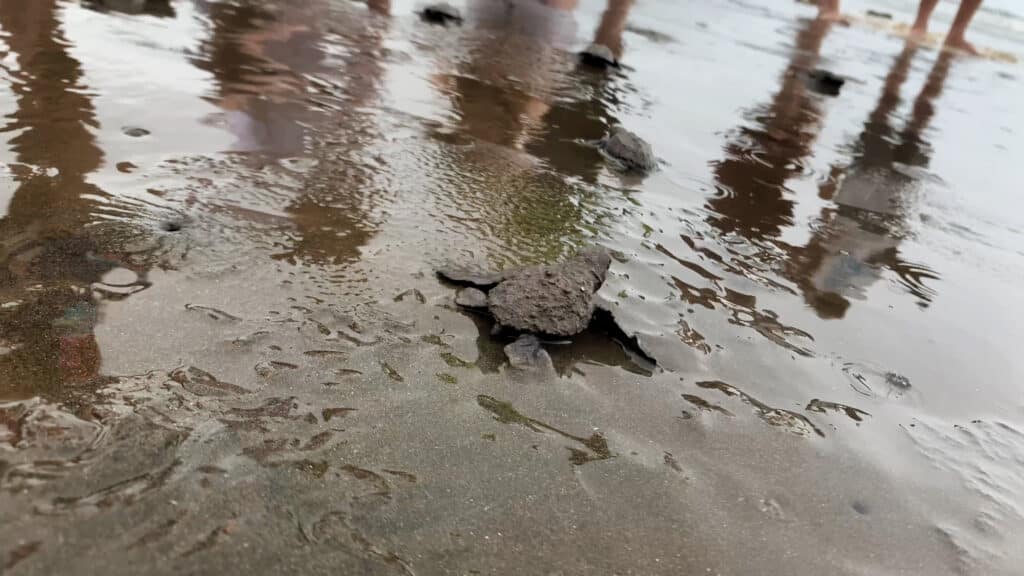
Fellow American ex-pat Tracey Lemon has dedicated the later half of her life to the conservation of one of the country’s endangered species: Sea turtles.
The former real estate agent, who knew many places as home during her time in the United States Army, retired to Costa Rica with her husband to follow her true passion, marine conservation.
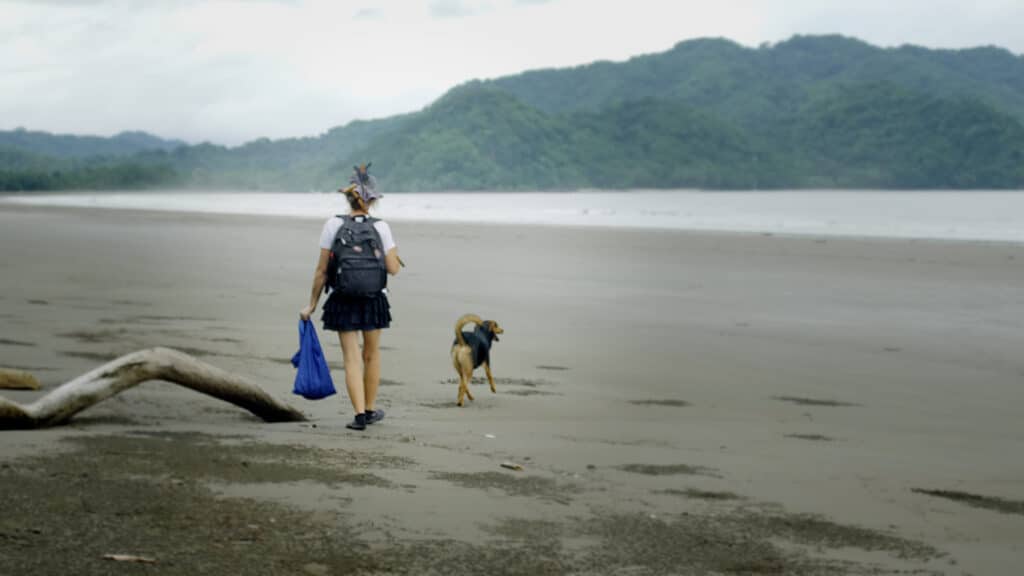
In her new country, Tracey became a volunteer at Tambor Bay Turtles and dedicated her life to protecting the remaining sea turtles and helping to grow their decimated population, as they are a “keystone species” that is essential to the functioning of Costa Rica’s ecosystem.
“Turtles are cleaners of the ocean, cleaners of the coral reefs,” she explained. “Losing coral reefs would equal a loss of oxygen. If we lost sea turtles, it would be detrimental to humans.”
Watch Tracey Lemon’s feature documentary: Protecting Tambor Bay’s Turtles
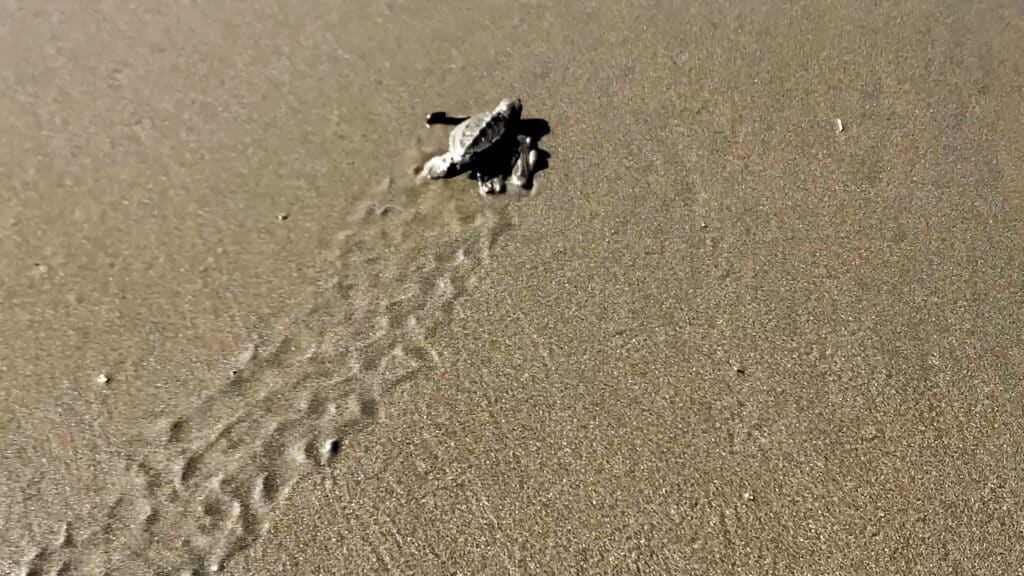
Her days are spent guarding turtle nests from egg poachers and other non-human predators, while educating the the county’s youth on why the barbaric traditional practice is detrimental to the future of Costa Rica’s environment.
“When the organization started, nearly half the nests were being poached,” Tracey said about how far their efforts at teaching the community have come. “This year, we only had two poached nests.”
Niccalina Santilli is finding rescue dogs forever homes
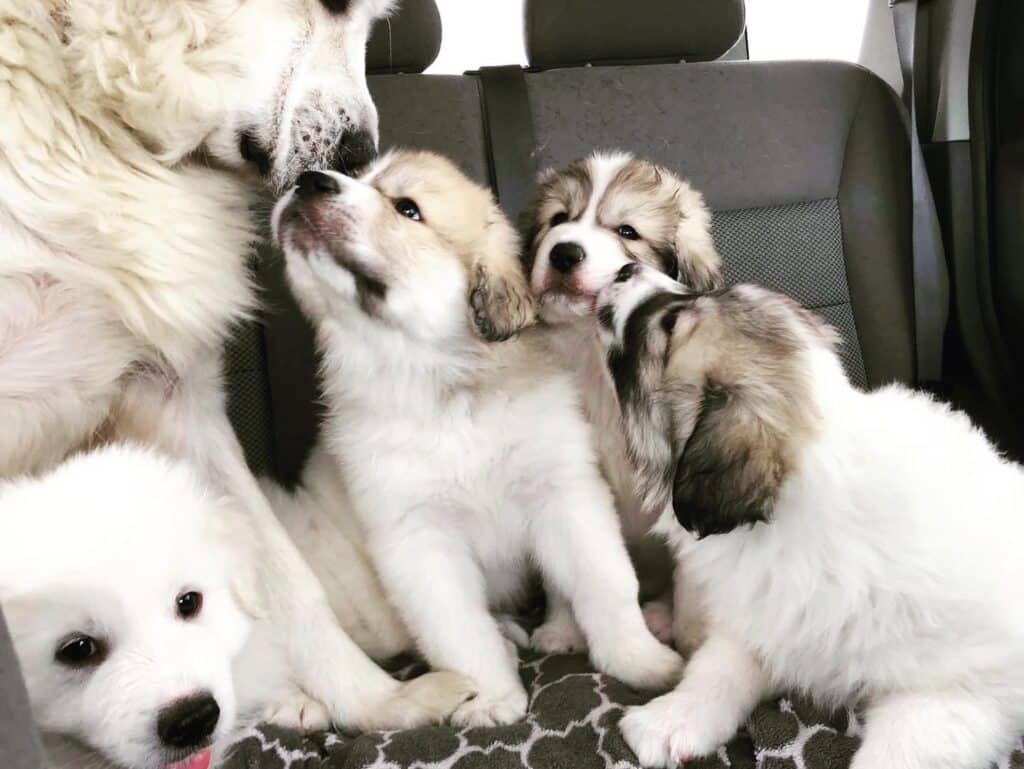
Niccalina Santilli has been a dog lover all her life, but it wasn’t until she learned that more than 3 million dogs end up in shelters in the United States every year, that she decided to launch her own dog rescue.
Niccalina created a rescue that caters to a very specific subset of canines, those who are tiny and tall. As the owner of a 160-pound Great Dane, she understood the needs of caring for giant breed dogs, and recognized the challenge of meeting their oversized needs.
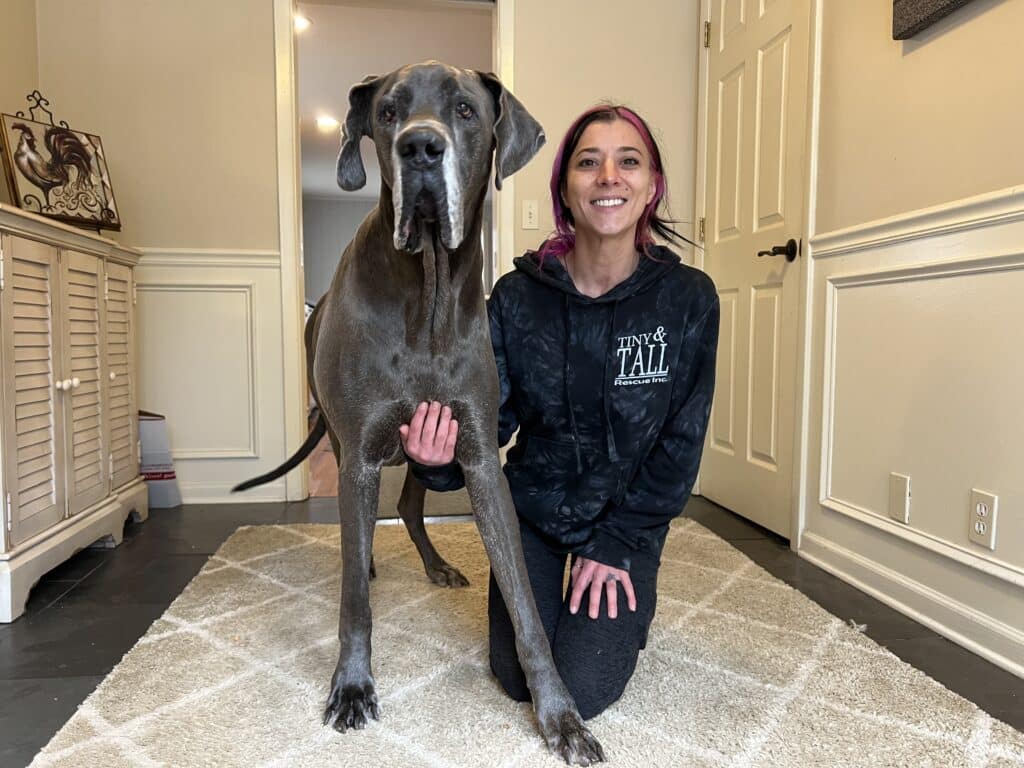
However, Niccalina was raised with small dogs, who held a special place in her heart. With 48% of US households reportedly owning a small breed canine, they make up roughly 1.5 million of the dogs who end up in shelters a year.
In 2017, she launched Tiny N Tall Rescue (TNT) to find homes for the little Chihuahuas and Terriers of the greater Chicagoland area, along with the giant Great Danes and Mastiffs who needed shelter in the area.
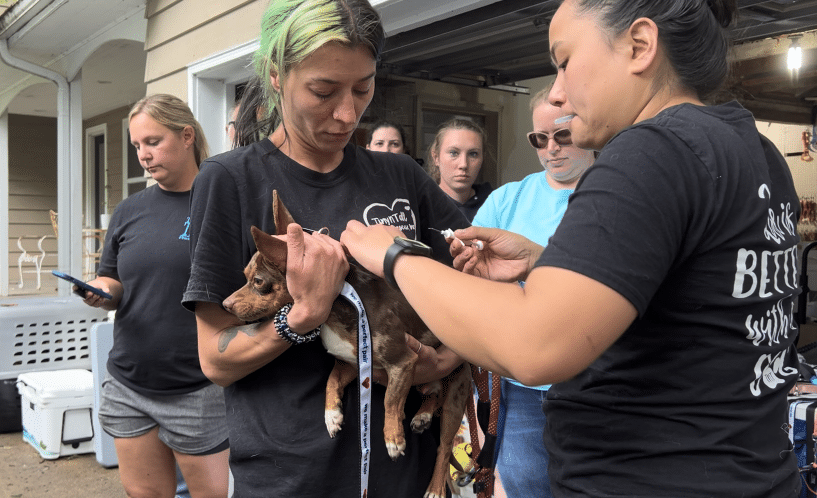
Niccalina’s non-profit is a 100% foster-based rescue, that without a shelter of their own, is completely reliant on the 150 active foster families that selflessly care for the up to 125 dogs that are in Tiny N Tall’s care at any given time.
The rescue has a medical team that treats outstanding issues, tags them with chips registered to the organization, and spays/neuters the pooches, to ensure they’re healthy before adopting them out. Each dog easily costs TNT $600 to $800 in medical costs alone for generally healthy pups, but they have spent up to $10,000 per pet to treat cases of extreme negligence, abuse, and health defects.
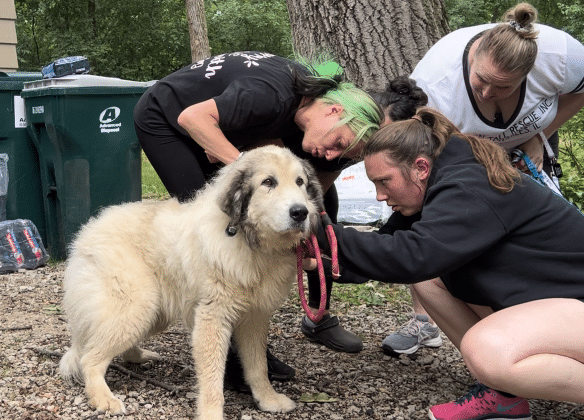
As the rescue has grown, their intake has expanded to include unfortunate pups slated for euthanasia in high-kill animal shelters. The transport team, which is typically led by Niccallina, travels to neighboring states to collect dozens of dogs who would lose their lives without TNT’s intervention.
Since opening, Tiny N Tall Rescue has saved more than 3,000 pooches from euthanasia at kill shelters. Comparatively to the roughly 670,000 dogs that are euthanized a year due to overpopulation, Niccalina acknowledged it was a “little dent,” but noted that TNT makes a difference.
Watch Niccalina Santilli’s feature documentary: Finding Dogs Forever Homes
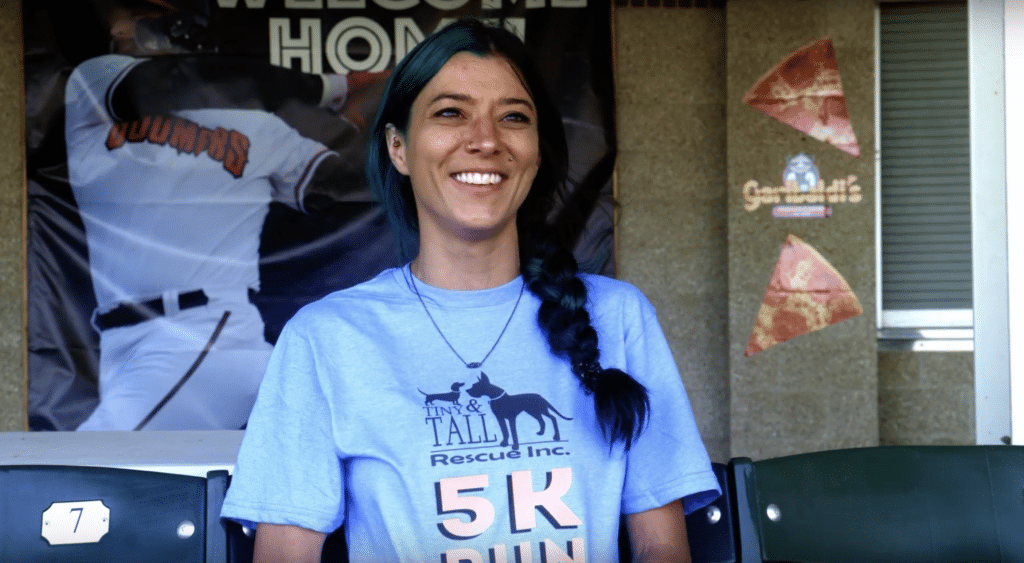
“There’s no way that we will be able to save every single dog, but if Tiny N Tall didn’t exist, those almost 3,000 dogs wouldn’t be alive today,” she remarked. “In the grand scheme of things, it’s not a huge number, but it still makes a difference.”
“That’s 3,000 families that have been touched by that dog,” Niccalina added. “It’s not only that dog’s life that was saved, we touch people’s lives too.”
Pat Beauvais is rescuing race horses

Thoroughbred horses make hundreds of thousands or even millions of dollars for their owners throughout their racing careers. The successful ones are used for breeding or competition sports like show jumping post-retirement, but those who fared average or ended their time on the track because of illness or injury, are often destined to a much grimmer fate: The slaughter house.
According to PETA, “the Thoroughbred-racing industry sends an estimated 10,000 horses to slaughter annually, meaning that half of the 20,000 new foals born each year will eventually be killed for their flesh.” In 2015, an estimated 130,000 American equines were slaughtered in Mexico and Canada.
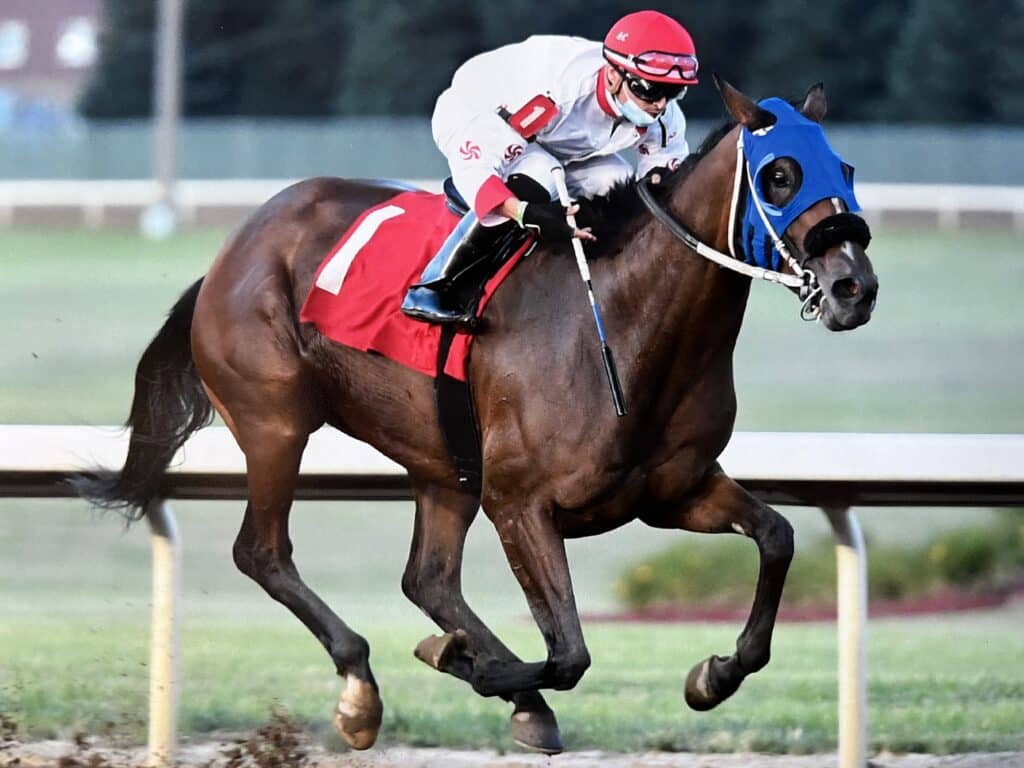
That’s where Pat Beauvais the founder of the Heart & Soul Equine Foundation comes to the rescue. Her non-profit organization allows race horses, who’s career typically ends in 2-3 years, to live out the rest of their 25-30 year-long lives in her sanctuary.
Pat gives the race horses a second purpose after racing as support animals for adults and children suffering from of a range of mental and physical ailments, from depression and post traumatic stress disorder (PTSD), to strokes and dementia.
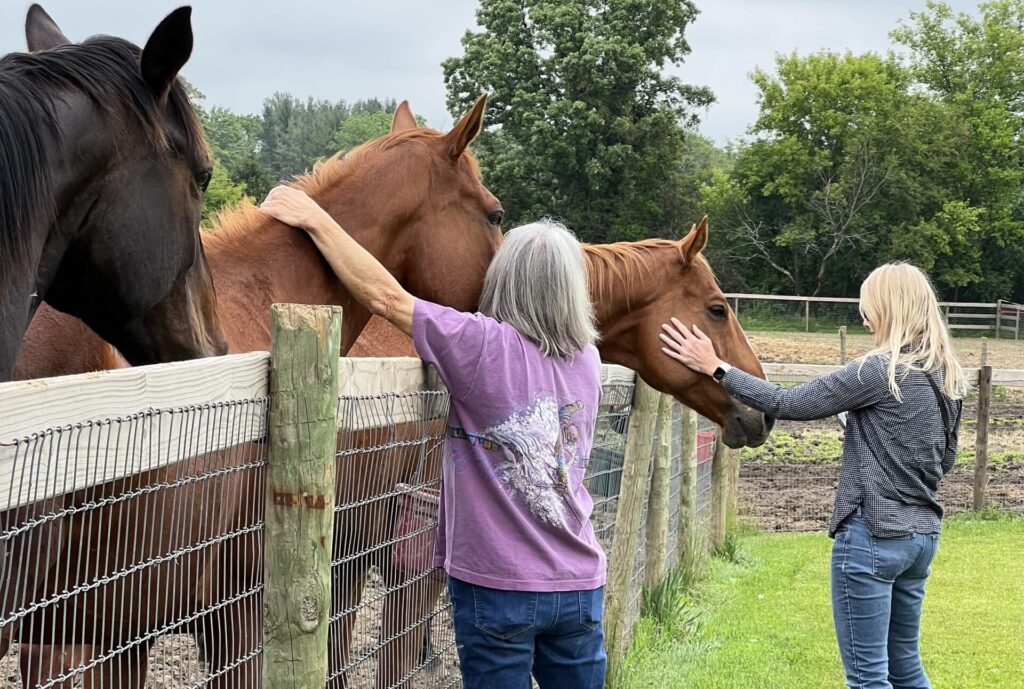
Pat’s horses work with patients suffering from a wide variety of conditions spanning from anxiety and learning disabilities, to traumatic brain injury and paralysis, along with those afflicted with Alzheimer’s and in hospice care.
Participants are taught the proper way to brush, pet, and bond with the horses. In certain circumstances, particularly with children, they are taught how to ride.
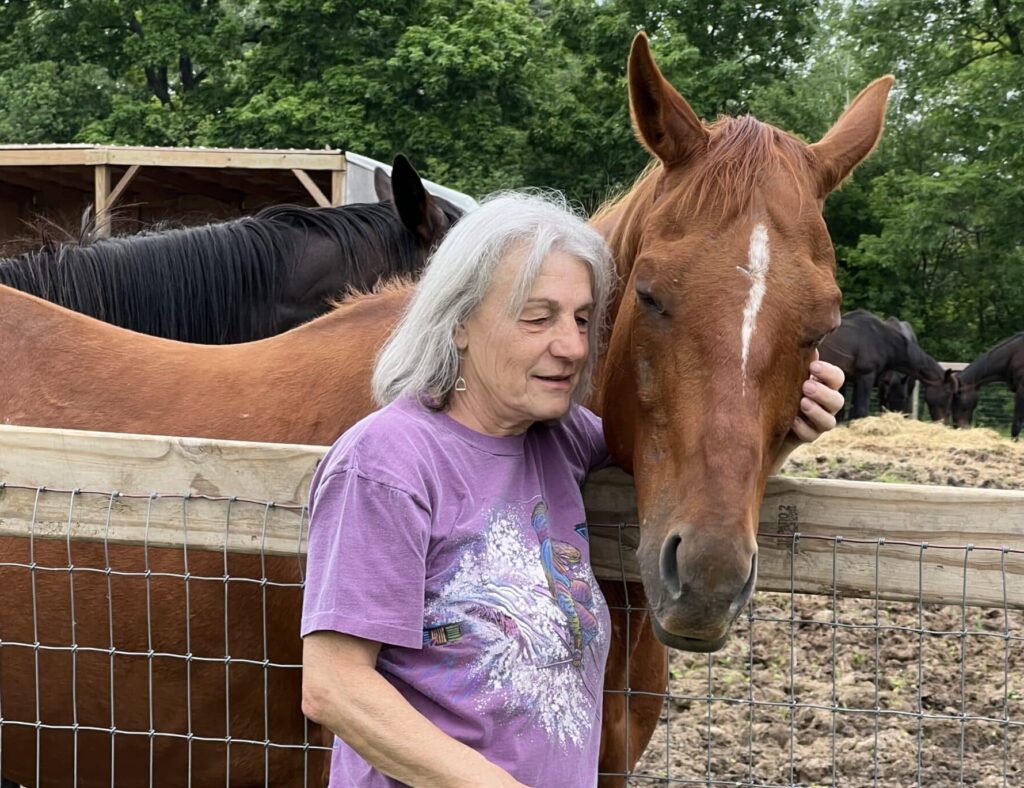
Their most successful endeavor is the Buddy Program, which pairs a participant with a specific buddy horse that they spend time with each time they visit the foundation, a one-on-one experience Pat believes helps to heal loneliness and depression.
The benefits of equine therapy include reduced levels of anxiety and isolation, increased trust and impulse control, along with better self-esteem and a higher level of happiness.
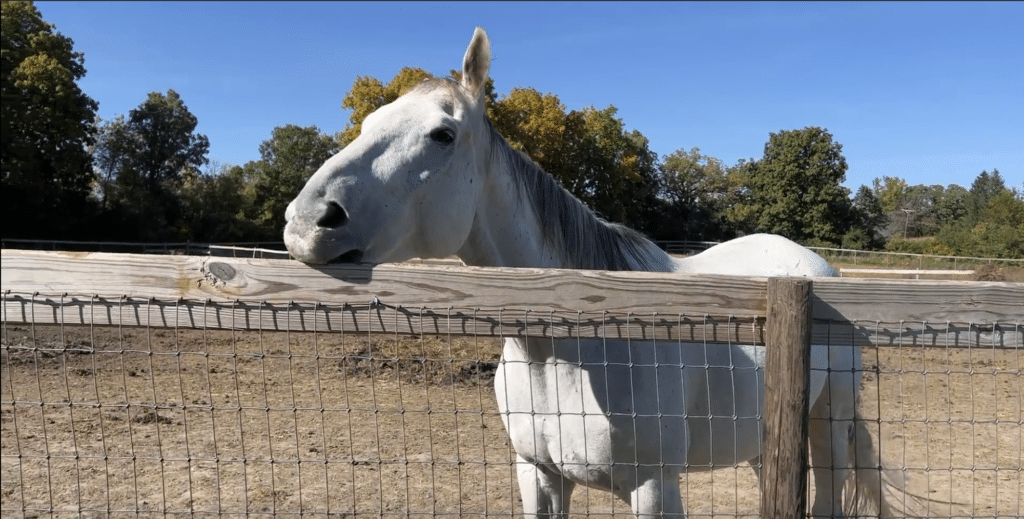
Pat’s foundation struggled in the midst of the COVID-19 pandemic, which caused both volunteer and donor support to dry up. The costs of feeding and caring for the herd of horses has quadrupled since that time. Despite the skyrocketing costs, Pat has kept the cost of equine therapy free to those who need it.
“I feel the people that really need the help, that the horses can give them, a lot of times they don’t have money,” she said about the services her horses provide. “And that’s not the reason to do something, the reason to do something is to have people benefit from it and have the horses benefit from it.”
Watch Pat Beauvais’ feature documentary: Rescuing Race Horses
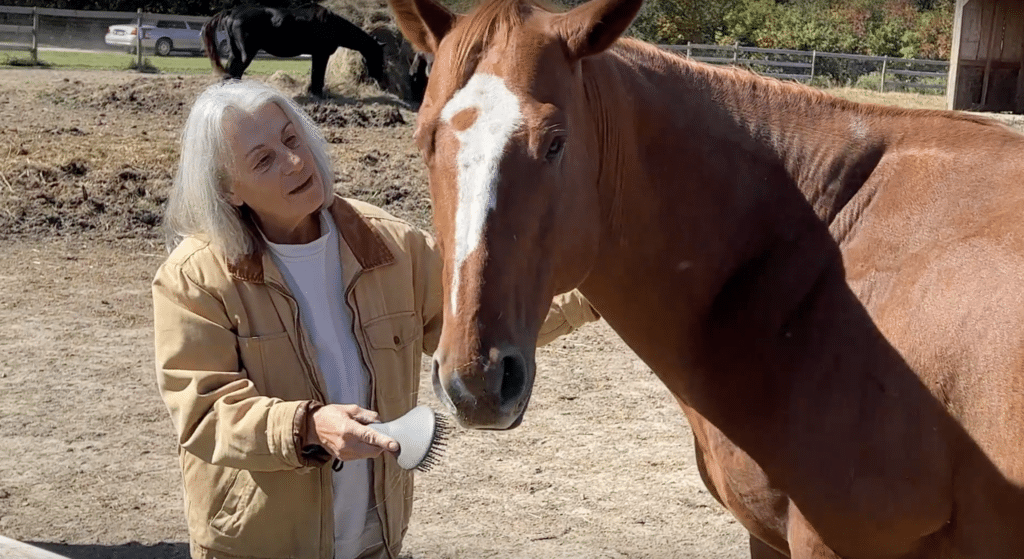
The Heart & Soul Equine Foundation is funded 100% on donations and by Pat’s sacrifice. This past year she sold her longtime home in Des Plaines and moved into an unfinished single-story structure on the the farm, so the money from the sale could be used to support her horses.
“I don’t want to have money be our lead,” Pat said about her non-profit. “I want the purpose to be our lead.”
Jill Carnegie provides sanctuary for abused tigers
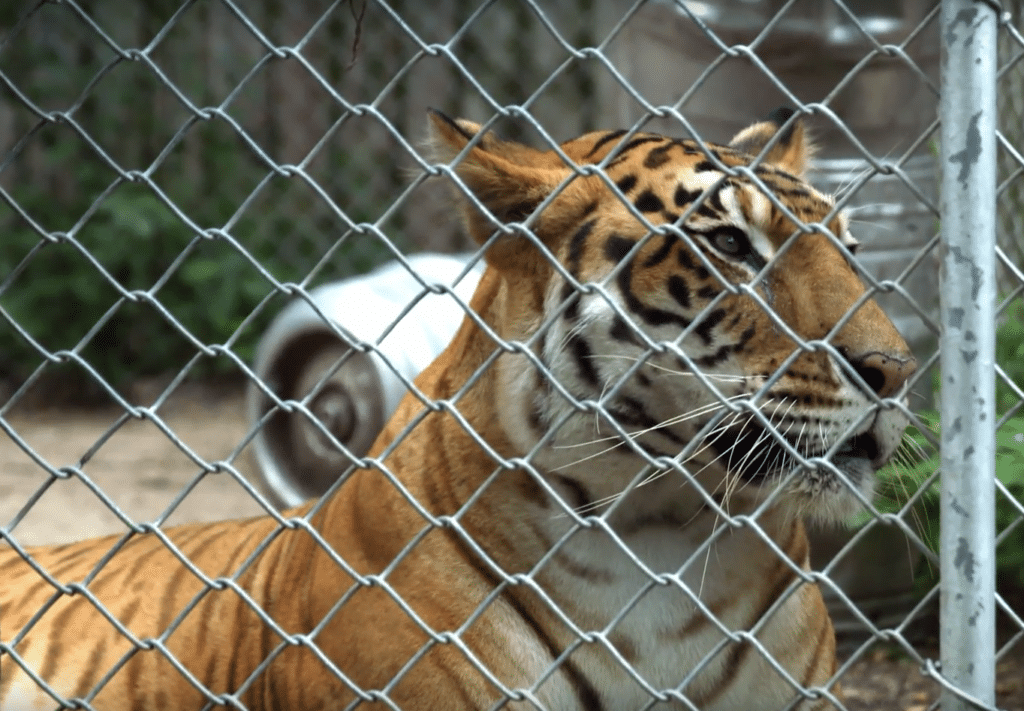
Jill Carnegie runs the second oldest big cat rescue in the United States and has been taking in animals that have been abused by humans for more than fifty years.
Most of the big cats that come to Valley of the Kings Sanctuary (VOTK) in Sharon, Wisconsin, have been mistreated to the point of starvation and deformation by people that have profited off their pain and suffering for entertainment purposes.
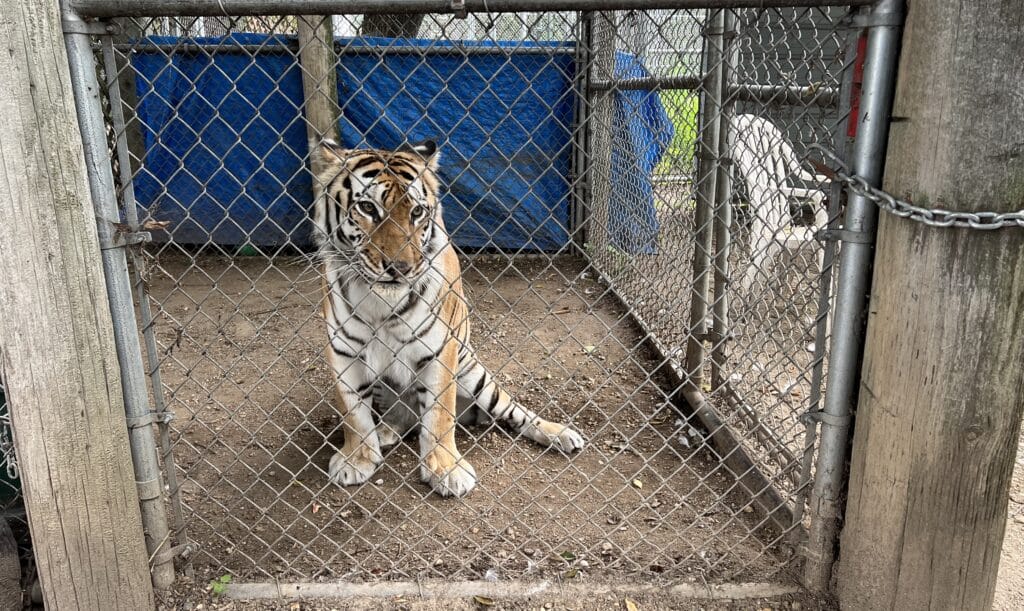
Jill has made it her life’s mission to compassionately care for the lions, tigers, bears, and more that are lucky enough to find their way to VOTK after a lifetime of anguish after being bred and sold through the $15 billion a year exotic animal trade.
Once in an owner’s possession, exotic animals typically lead miserably short lives under cruel conditions. Many are kept in far to small enclosures, were they’re improperly nourished and never let outside. People are able to exploit the animals as property rather than sentient beings, to do as they wish with them, which includes using their “pets” as revenue generators in for-profit businesses.
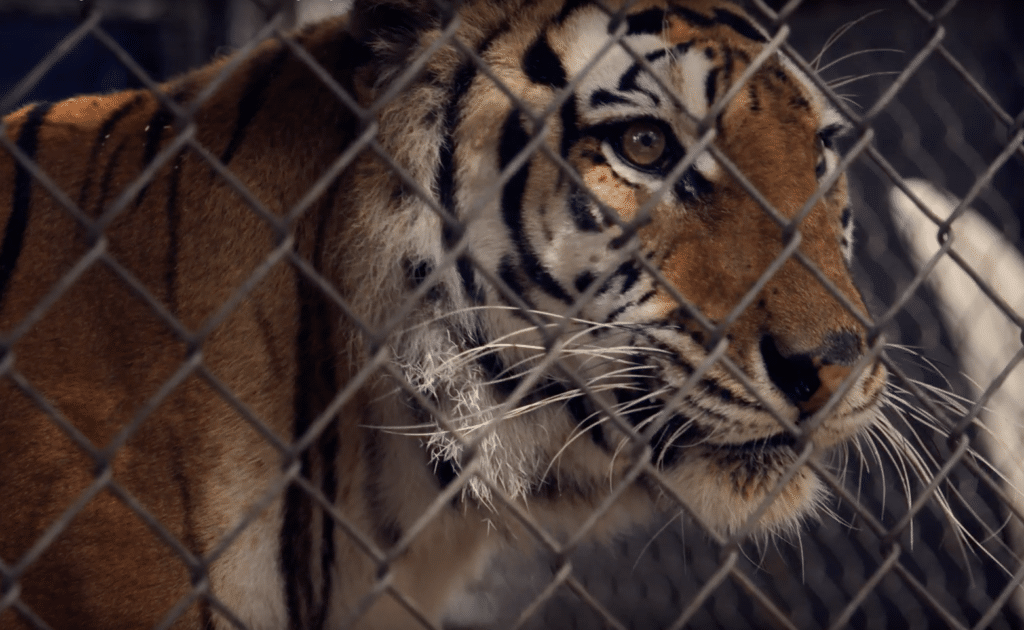
Big cats specifically are used at a young age for cub petting attractions that delight humans but cause enormous stress to the animal. To complicate matters, cub petting has an extremely limited time frame before the lovable baby cub grows up into a dangerous juvenile cat that needs to be disposed of.
An enormous part of the exotic animal industry involves parting out animals for profit. Their hides can be sold as pelts, their meat for consumption, and even their bones are used as virility enhancers in eastern medicine. Big cats, specifically lions, are sold off to game preserves for canned hunts, where they’re hunted as prey by the very people who were cuddling them months earlier.
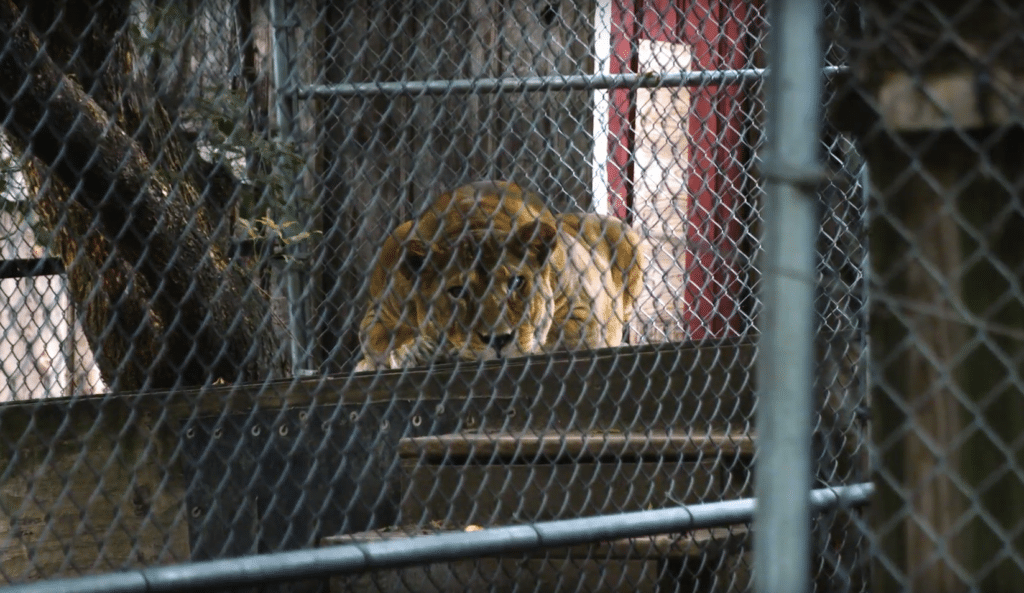
Canned hunting is a big business, which sees “hunters” pay up to $45,000 to kill a lion, who are often sedated or tied to a stake to make them easier to shoot. Because the hunters typically plan to display the head of the animal as a trophy, they aim for the abdomen, which leads to a slow agonizing death for the big cat.
“In Texas, big game hunts, you can take a lion and kill it. Turn it loose or leave it in the cage, then be brave and go hunt an animal that was once a bottle baby,” Jill said about game reserves. “The animal won’t even make it out of the cage, or they’re shot multiple times and suffer horribly.”
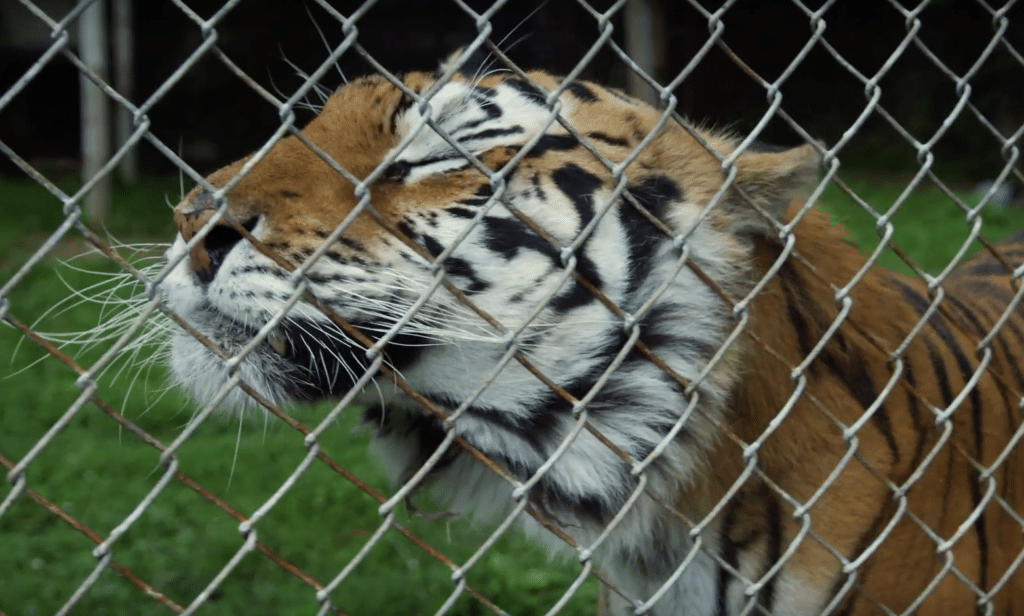
That’s why Jill opened Valley of the Kings Sanctuary and dedicated decades of her life to taking care of animals that have been abused and abandoned by others.
She rescues them despite their pressing medical issues and deformities, and allows them to live out the rest of their lives in peace, providing them with good food, friends, and toys. The sanctuary is 100% run on donations, and in all the years running it, Jill has never taken a paycheck.
Watch Jill Carnegie’s feature documentary: Taking In Tigers
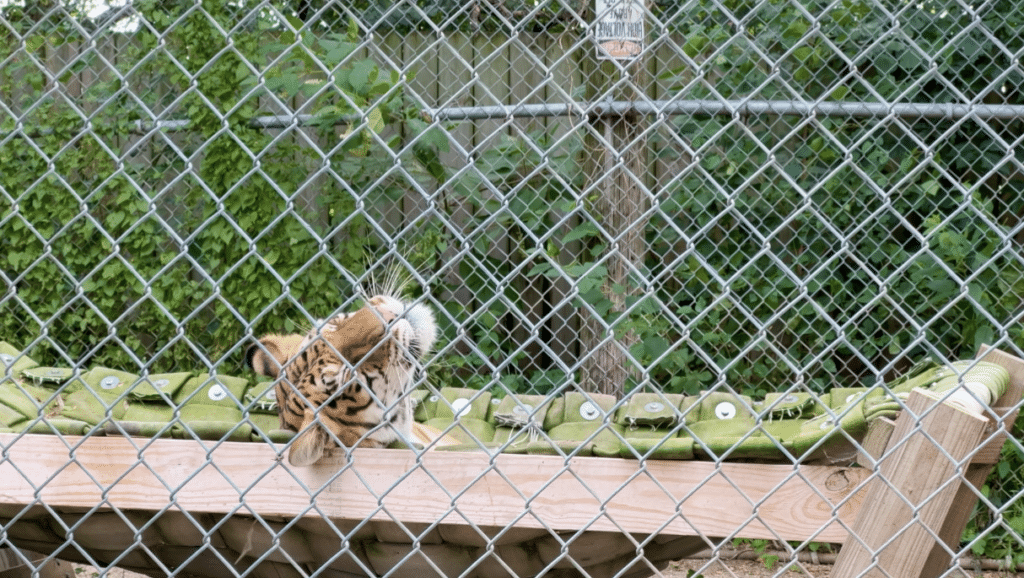
Jill actually connects more with the animals in her care then she does with other people. She notes that despite most of the animals she rescues being apex predators, they’re very happy creatures that “live for love.”
She believes that after a lifetime of abuse, once they come to her sanctuary, that she can tell they’re grateful for their new lives. “They’re not mean vicious killer animals, humans are,” Jill remarked.
Brett Eastburn is limbless and limitless
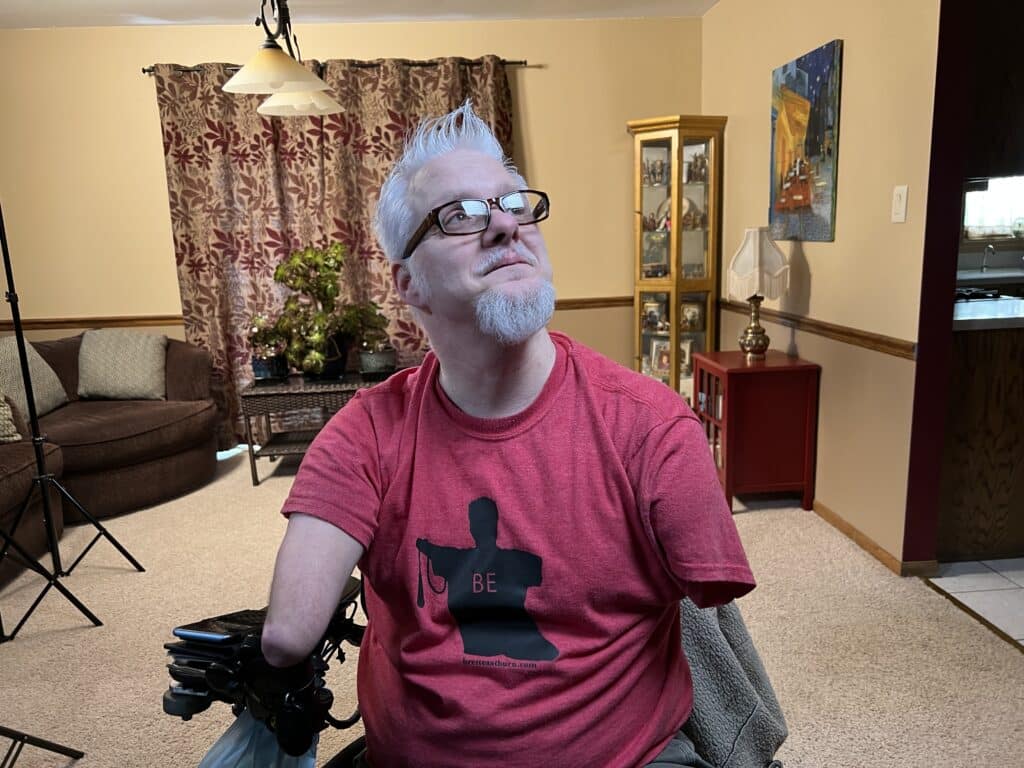
Despite being born with no arms or legs, Brett Eastburn has managed to live a fulfilling life, inspiring those around him to live gratifying lives themselves.
As a motivational speaker, comedian, and, most recently, Twitch streamer, he seeks to spread the wisdom that has brought him to where he is today: “You’re handicapped if you choose to be… It’s only over when you say, ‘I can’t.’”
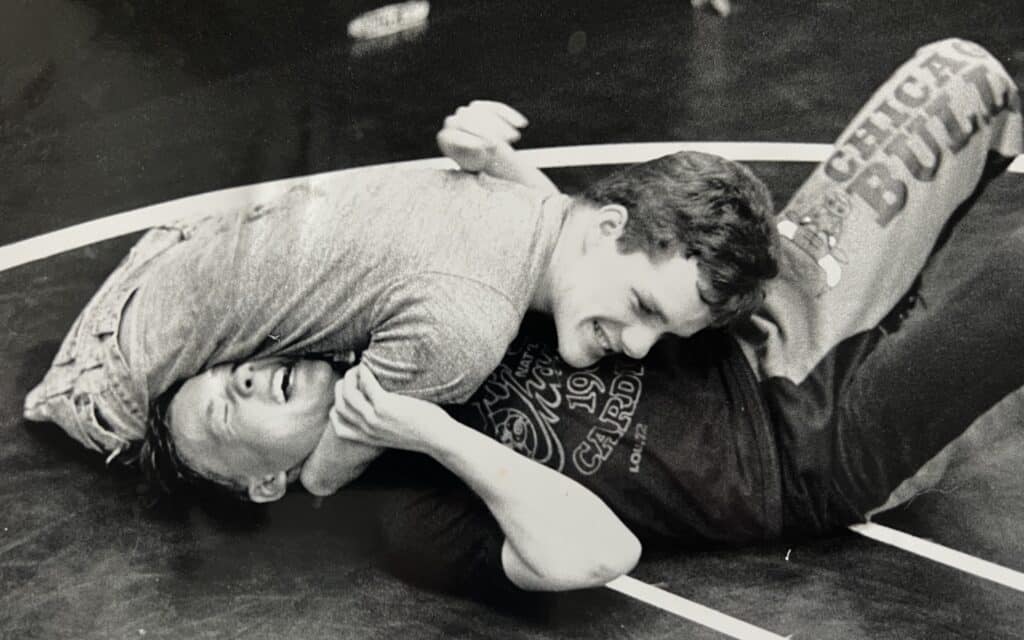
As a motivational speaker, comedian, and, most recently, Twitch streamer, he seeks to spread the wisdom that has brought him to where he is today: “You’re handicapped if you choose to be… It’s only over when you say, ‘I can’t.’”
“I discovered very early on that just going out and enjoying my life, being prosperous,” he said, “people see that and start to realize their own potential.” To Brett, he was born to motivate.
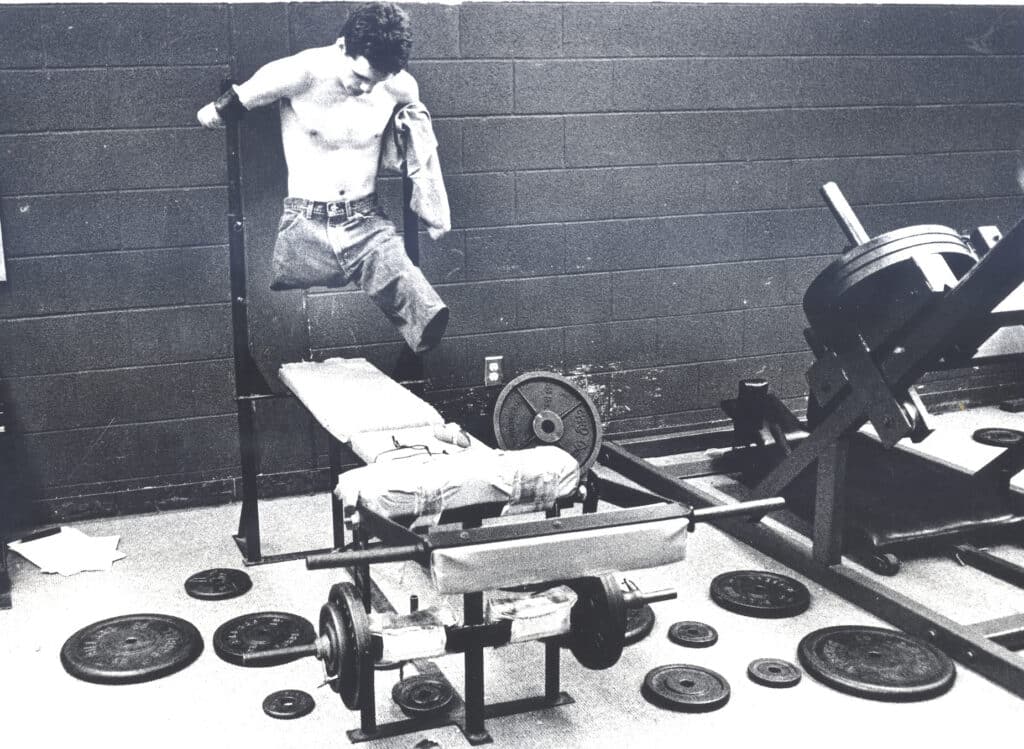
When he was born in 1971, “The doctor came in and sat next to her [Brett’s mother] all somber and said, ‘Your son was born without arms and legs.’ My dad was like, ‘This is gonna be a rough one,’ and my mom responded, ‘I don’t care,’ and apparently that was the last time they ever spoke about it. From that point on, they just raised me like they should have.”
Brett had adopted the notion that he could do anything he could set his mind to and any discouragement from people seemed to only motivate him. In high school he played basketball, swam, and wrestled, even placing 4th in the 1988 AAU (Amateur Athletic Union) national wrestling competition.
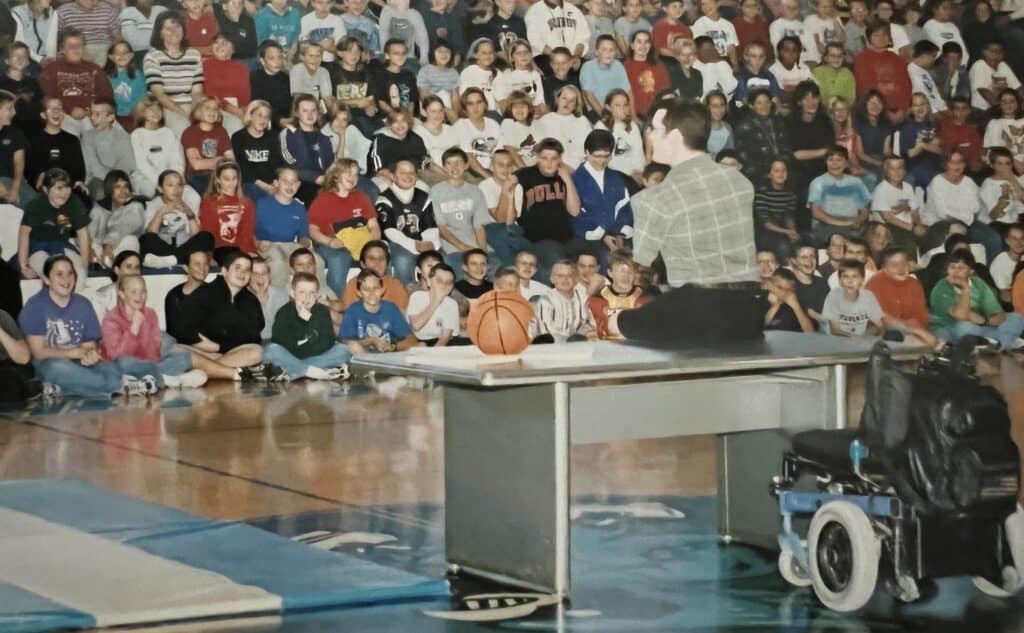
While Brett’s athletic achievements were monumental to him personally, they didn’t fulfill his true desire of making a positive impact on the world.
He took what he learned about himself through playing sports—that seeing his prosperousness unlocked others’ potential—and made a career out of it, becoming a motivational speaker in early adulthood and traveling the world to give talks. After mastering the ability to speak to large audiences, Brett took to stand-up comedy to spread his message.
Watch Brett Eastburn’s feature documentary: Limbless and Limitless
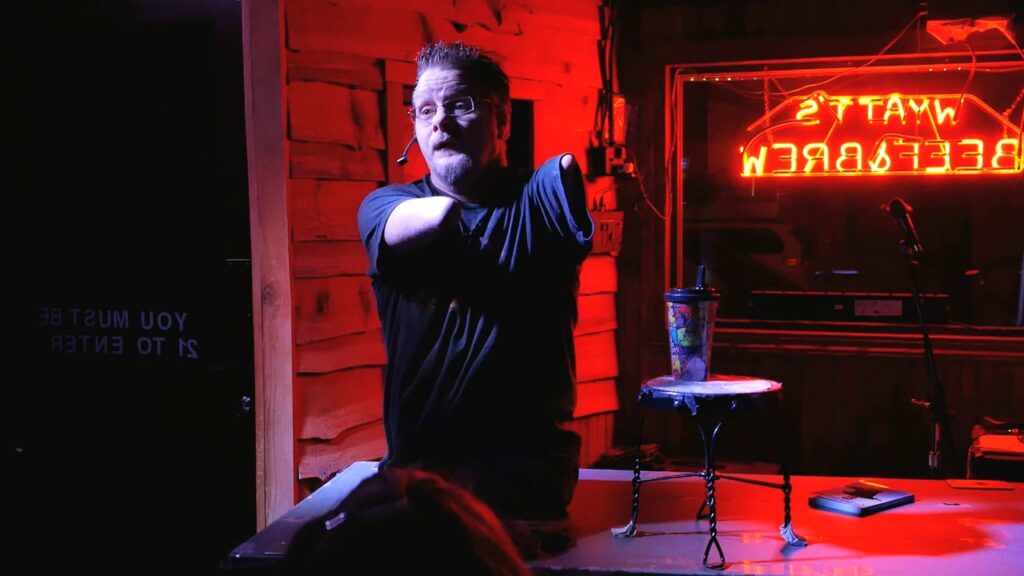
Much of Brett’s comedy is self-referential, taking full advantage of the audience’s presumptions about him and flipping them on their heads, demonstrating the fact that he is not someone to feel sorry for, but someone to admire. He always incorporates inspirational elements into his act, ensuring that the audience does not only laugh, but walks away from the show feeling motivated.
His knack for comedy has taken him all over the world, including Japan, Panama, Canada, Switzerland, and Mexico. He even authored the self-help book I’m Not Missing Anything in 2011, in which he provides “problem-solving tools to assist you in attaining a successful and fulfilled life.”
Vick Lee won’t quit after a terminal cancer diagnosis
Filmmaker Vick Lee was diagnosed with stage 4 lung cancer, a disease notorious for its low survival rate in November of 2020. Despite the severity of her condition, her drive to create and inspire remains unhindered.
Vick Lee is a Chicago-based filmmaker whose social justice-oriented shorts tell of the Black experience in America. For her, filmmaking is a form of activism, a medium through which she can portray the realities of both Black struggles and Black love: “I want to see me on film,” she explained.
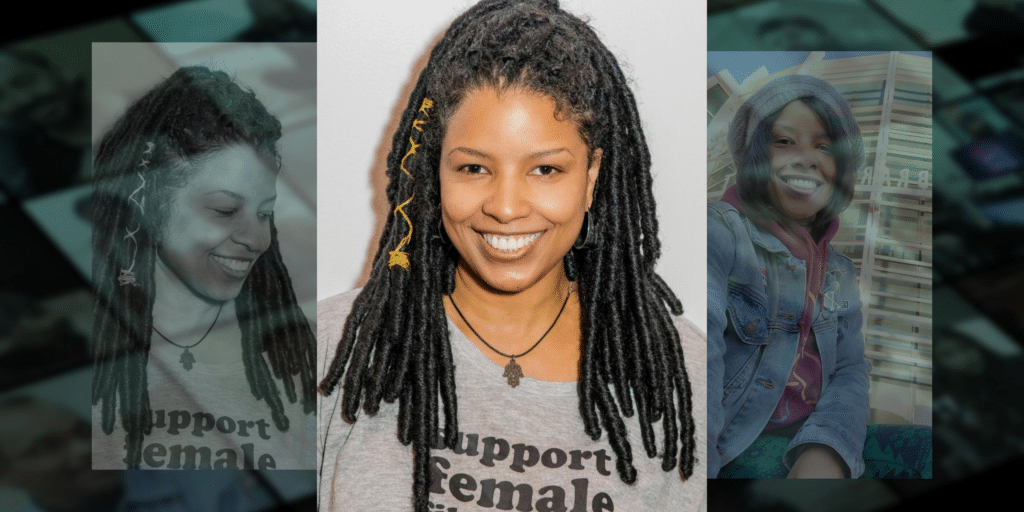
Making films is not something that’s optional: she has to let loose the stories ruminating inside her imagination during her limited time left. “[Film] was something I couldn’t escape. It just kept calling to me,” she said. “I’m doing this because I love it. But while I’m doing it, I also know that there are things that have to be conquered.”
“Film is my form of activism,” she says. “Everything that I do is done in love and in Blackness… Blackness is a culture, a resilience, a drive.” With her films, she seeks to elevate the status of Black women within a culture in which they have historically been ostracized.
Watch Vick Lee’s feature documentary: Terminal Life: Living With A Devastating Diagnosis
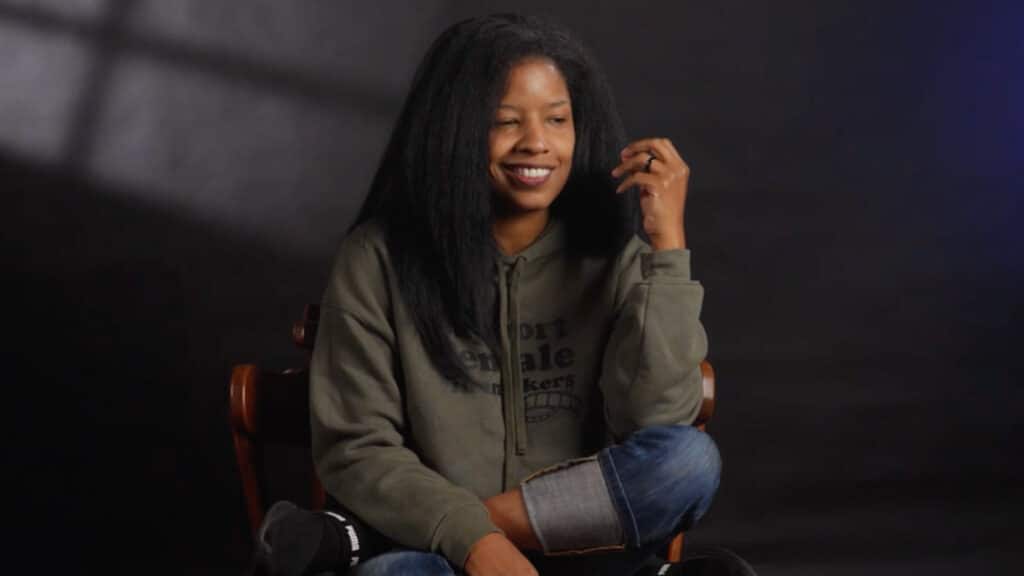
Despite her devastating diagnosis of late-stage lung cancer which has metastasized (spread) from the lungs to other parts of the body, which causes her frightening symptoms like shortness of breath and coughing up blood, Vick is determined to make the most of the estimated few years she has left.
She even hopes to inspire others by continuing to pursue her life’s passion. “I want people to be inspired to keep going,” she commented. “You can get faced with some devastating, life-changing news, but you can push through it and still do what you want to do. You can still follow your passions.”
Damon Lamar Reed is painting missing women to help find them
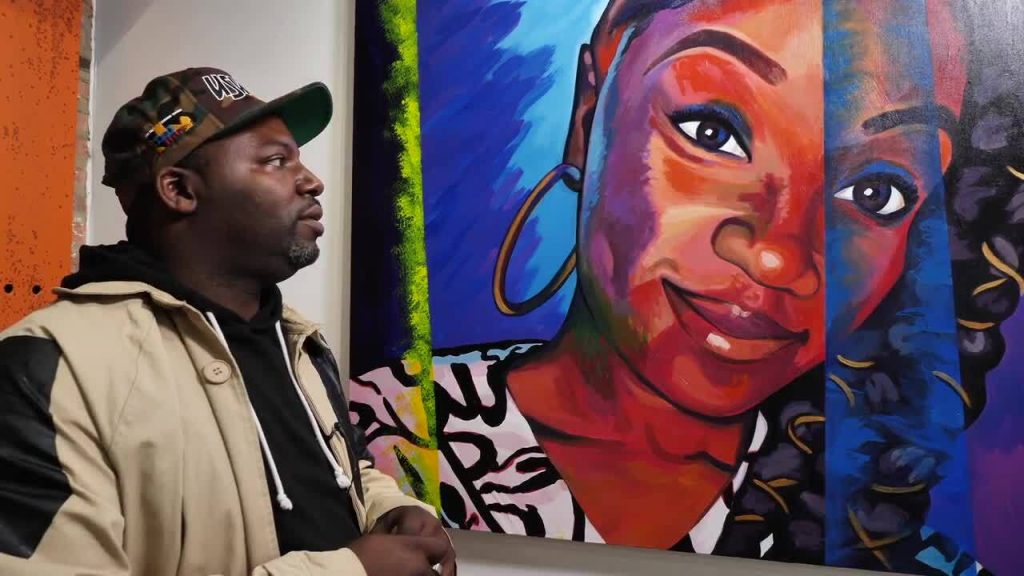
Inspirational mural artist Damon Lamar Reed uses his artwork to convey the rich cultural legacy of the local communities he depicts in his paintings. Reed’s work can be seen hanging in galleries, but more prominently his nearly 100 public works can be spotted throughout inner-city neighborhoods in Chicago.
“Good public art creates culture. It feeds the soul, it uplifts. Not everyone is going to a gallery, but if they walk by something I’ve created, it’ll have the same impact,” he observed. “I like to say that I bring the gallery to the neighborhood and I bring the neighborhood to the gallery. Because I believe what I do is museum or gallery quality art on walls, it’s just in a public platform.”
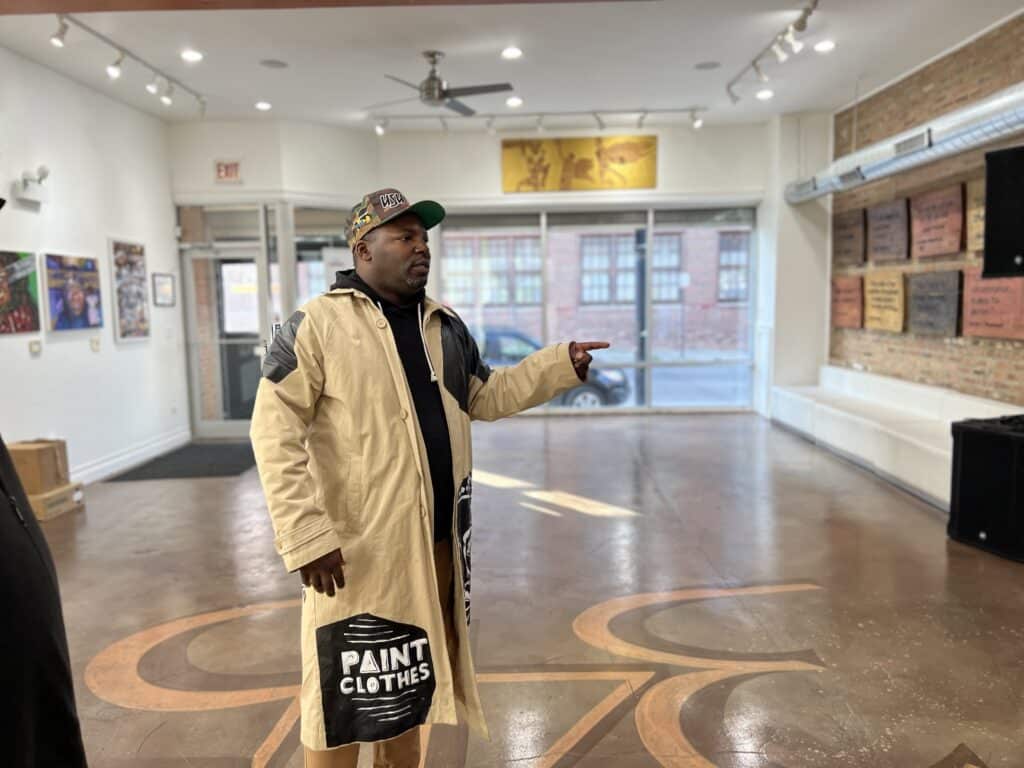
Beyond beautifying communities with uplifting works that represent their cultural history, Damon launched a project that has the potential to save lives. He was inspired to paint missing women after the murder of his aunt and two young cousins was never solved.
What started out as a tribute to make sure the women were not forgotten, evolved into a city funded mission that aims to locate women who have disappeared. “I do it to raise awareness, I do it to bring honor, and I do it to create something beautiful,” he said about the paintings. “I want to show the world that, yes, we are still searching, and we’re gonna keep going until we find answers, until we find resolution.”
Watch Damon Lamar Reeds documentary: Painting The Missing
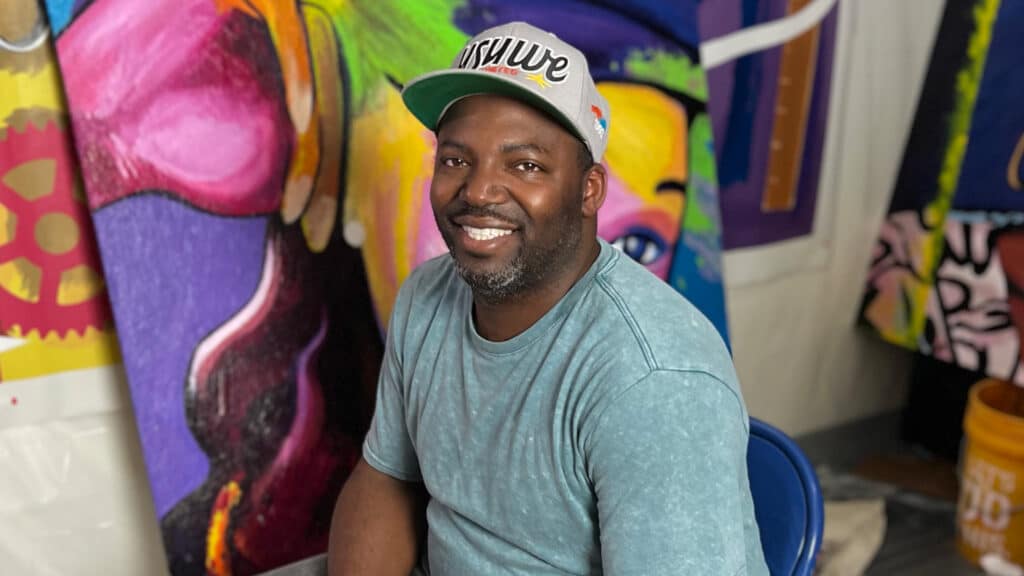
Damon’s Still Searching project makes the faces of missing women, whose cases typically go cold, highly visible on walls in the communities where they disappeared from. Their portraits include QR codes with information about the women, and contact information for local authorities involved with their case.
“I feel like the art has moved to civic engagement,” Reed added. “I’m painting women that are missing, but it’s about keeping safe the women that are here and aren’t missing. When the idea came to me, I thought it was a big project. Sometimes you can have a good idea, but then sometimes you can have a God idea.”
Alex LeVesque is teaching former gang members a new trade
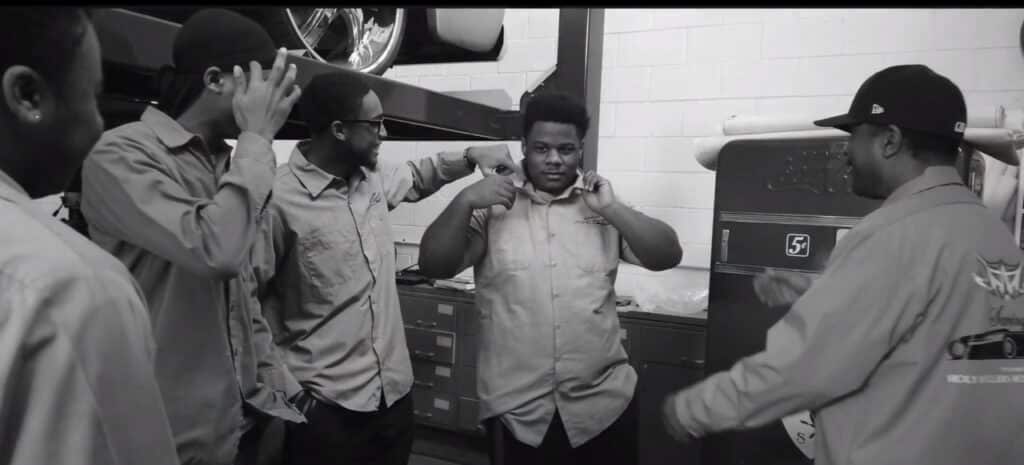
Mechanic Alex LeVesque is the founder of Automotive Mentoring Group (AMG), a non-profit foundation that has been helping former gang members turn their lives around since its inception in 2007.
“I don’t have to do this for a living. I consider myself to be a smart guy, and I say that in the most humble way, but I know how to get things done. I can do other things if the motivation was just money, but it’s not money, its saving lives,” LeVesque remarked. “That’s what I do, I’m a lifesaver.”
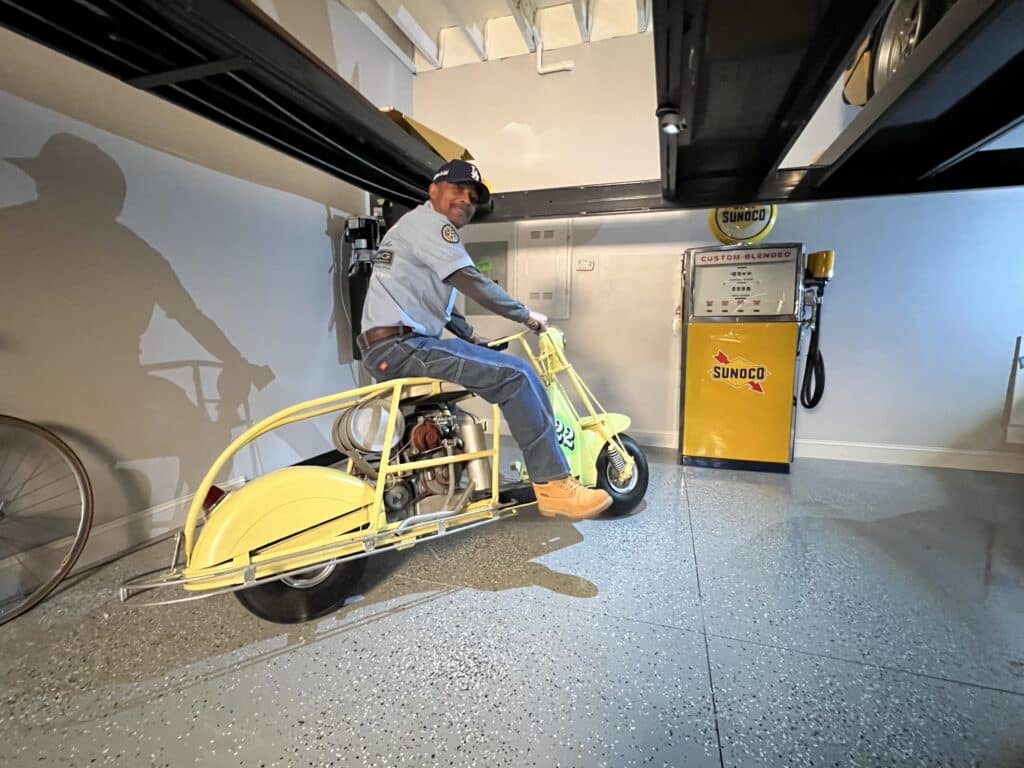
Under LeVesque’s tutelage, young men and women who were caught up in gangs are trained in automotive repair, comprehensive bodywork, and restoration through a three to six month program that teaches them how to take apart and completely build an entire car.
LeVesque’s program teaches former gang members the skills they need to function in society, as well as helping them earn their high school diplomas, enroll in college, and obtain apprenticeships and jobs in the automotive industry.
Watch Alex LeVesque’s feature documentary: Mentoring Gang Members with Classic Cars
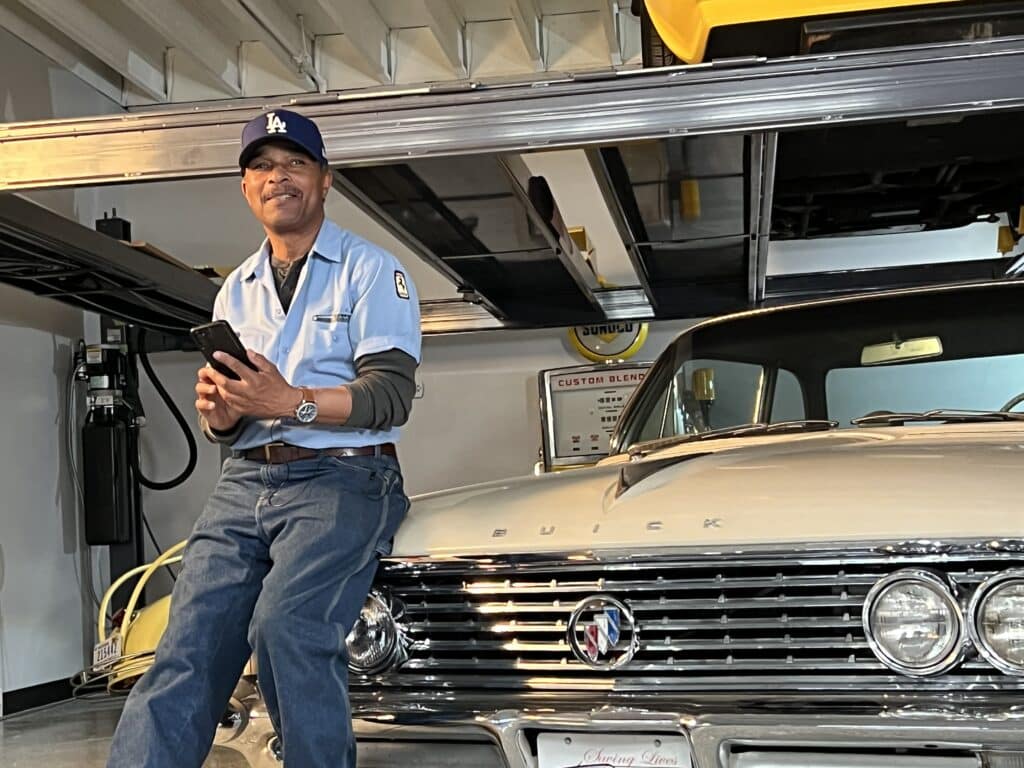
“The estimate is that there are 180,000 gang members in Chicago,” LeVesque detailed. “These kids, they need light, they need to talk to somebody that has light, that had vision, that has hope. Somebody that tells them it’s possible for you to have dreams, and it’s possible for you to be able to take care of yourself and provide for your family, that it’s possible for you to get educated.”
He explained that most of the young men he works with are fatherless boys, which is why he created AMG. “It’s the absolute reason why I do it,” he concluded. “It’s what god put it on my heart as a mandate that I must do. Why he chose me to do it, I can only guess because he felt like I was the person that could do it.”
Yecson Preciado teaches underprivileged children how to fight
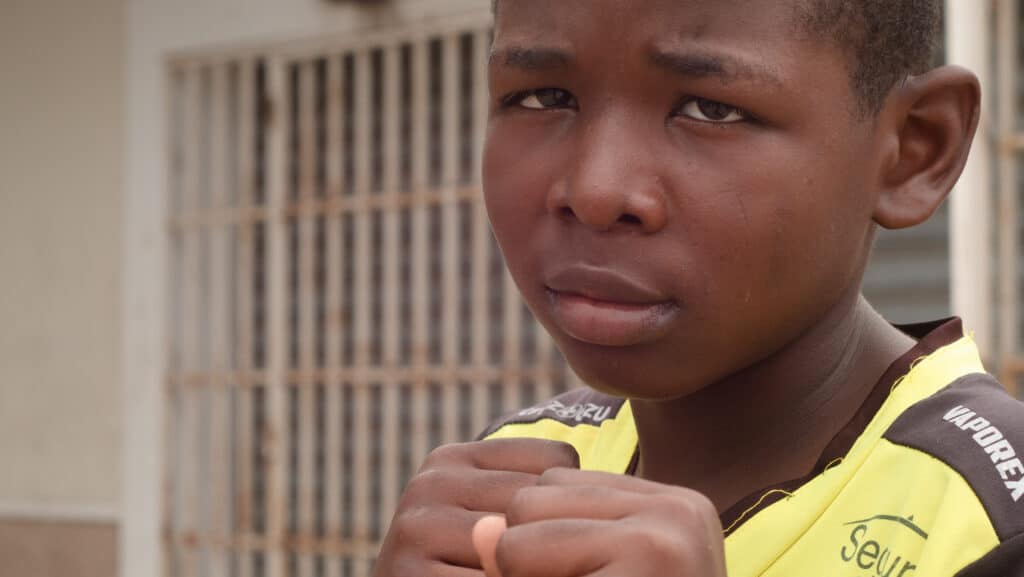
Yecson Preciado was born and raised in Guayaquil, a port city which serves as Ecuador’s commercial capital, but also has the highest poverty rate in the country. He was brought up by a dangerous father who regularly abused him as a child. At ten-years-old, Yecson had enough and chose to run away to live on the dangerous streets, rather than be beaten.
He grew up to become a professional boxer, and fought some of the country’s greatest fighters. He became a local legend, before retiring to dedicate his life to teaching the sport to children.
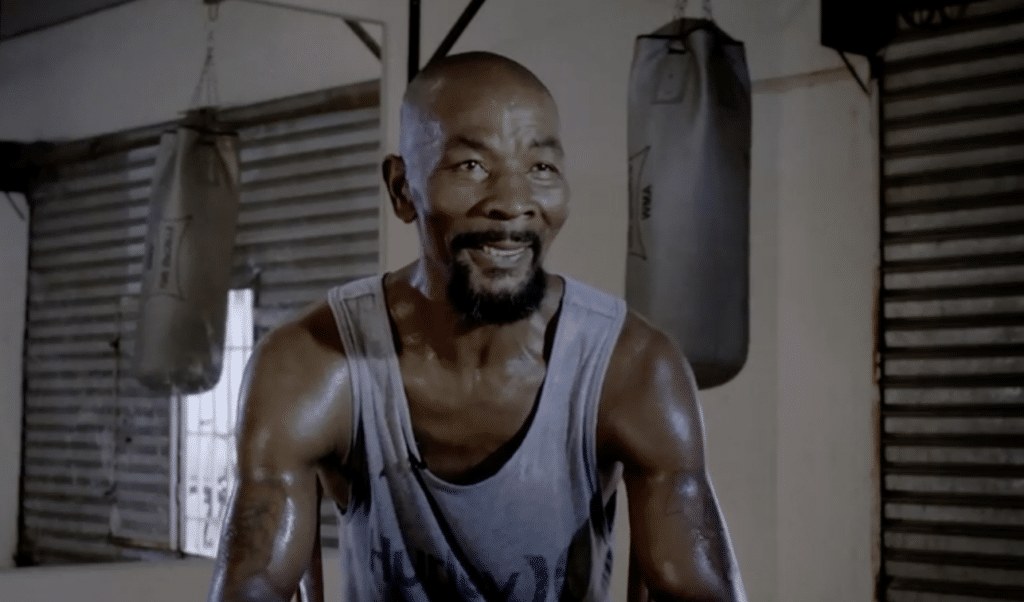
The decision to train youth boxers came after Yecson witnessed police mass-evict an entire makeshift neighborhood in poverty-stricken Isla Trinitaria. He started Trinibox to give children facing homeless the opportunity to play a sport that could lead to an exceptional future.
“I do this because my students become to be like my sons and daughters. I have a commitment to them, and always, the first thing that has to be the boxing school and my kids,” Yecson remarked. “I don’t want to see any children go through what I lived, nor watching a kid using drugs, or to be killed a tender age.”
Watch Yecson Preciado’s feature documentary: Fighting For Life
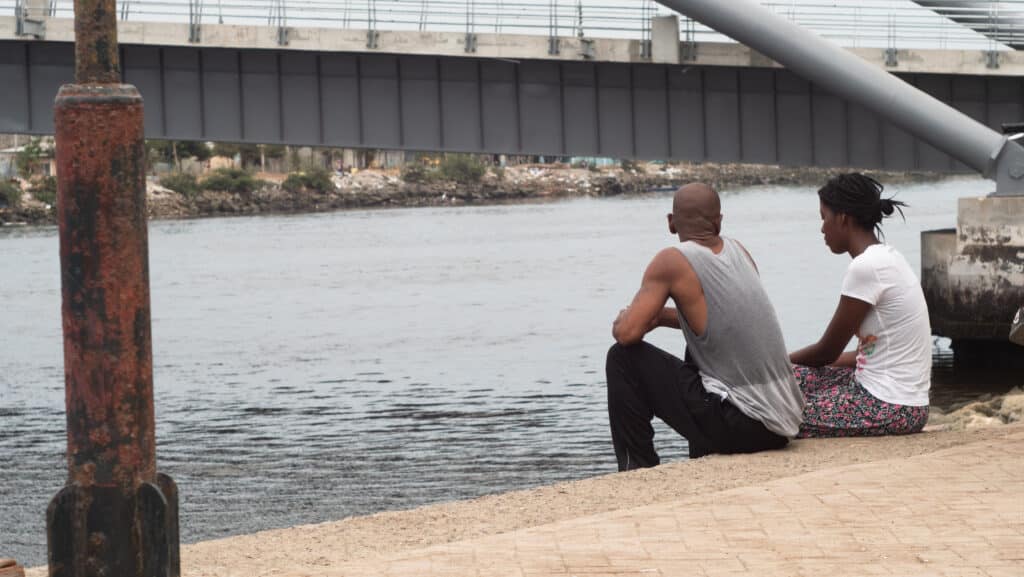
Yecson trains his students six days a week, from the early morning to the late afternoon. At night he works 12 hour shifts as a dock security guard from 6:00 p.m. to 6:00 a.m. to provide for his family and earn the money to keep his boxing gym open.
He hopes that his efforts will help one of his kids reach an international elite level of competition. “My goal since I started this was to see a student of mine fighting in Las Vegas, Nevada or at the Olympic Games that is my goal,” he said. “I haven’t reached it yet. I am still here at school, moving forward. I will never stop.”
Edgar Mora is building homes with recycled trash
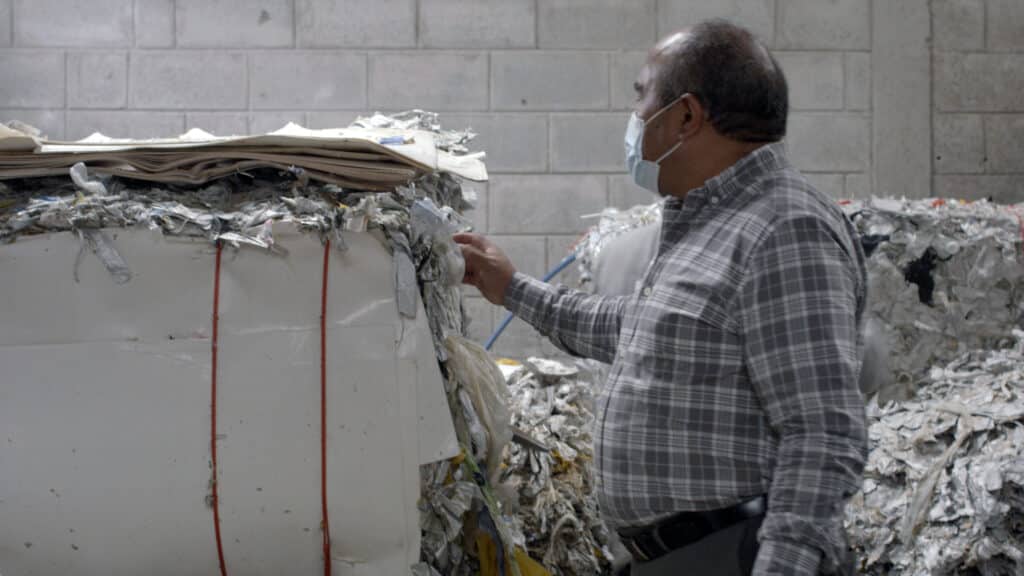
Edgar Mora has dedicated his life to mending Earth’s environmental crisis. He is the founder of Ecuaplastic, a company that turns disposed-of plastic into construction materials. Edgar dreams of one day living in a world full of buildings that have “zero carbon footprint.” With Ecuaplastic, he and his team are creating the blueprint for such a future.
Using their collective imaginations, Edgar and his team have found ways to turn plastics into building materials, even going as far as to construct sturdy, comfortable homes.
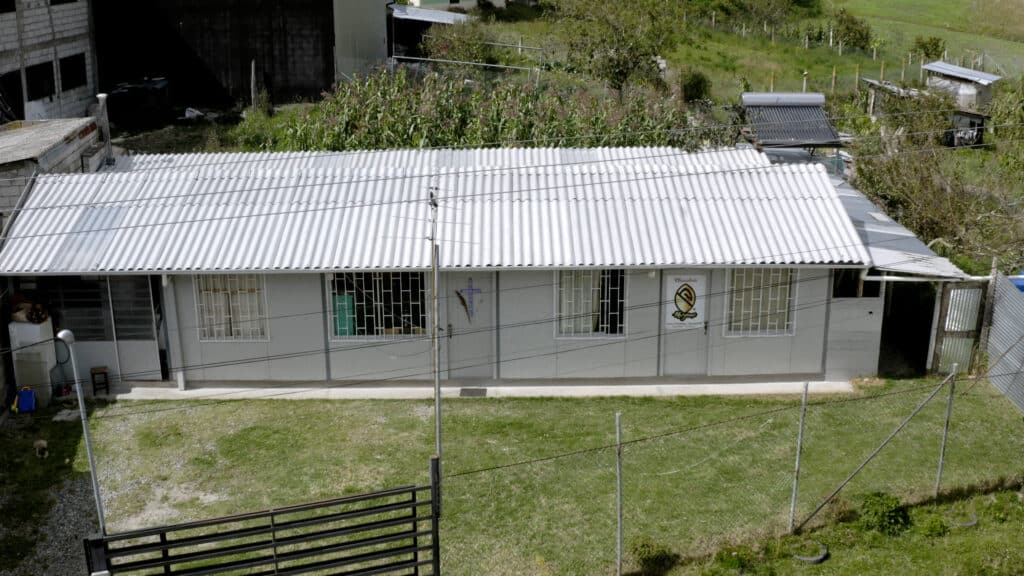
Humanity’s impact on the environment has been a hot topic for decades now, and for good reason. As Edgar explains, “There is plastic floating in the five oceans. There are five immense plastic islands… There is almost no turning back from that. But if we continue to generate waste at the current speed, the sizes of waste islands will be higher than those of inhabitable islands.”
Humanity’s impact on the environment has been a hot topic for decades now, and for good reason. As Edgar explains, “There is plastic floating in the five oceans. There are five immense plastic islands… There is almost no turning back from that. But if we continue to generate waste at the current speed, the sizes of waste islands will be higher than those of inhabitable islands.”
Watch Edgar Mora’s feature documentary: Building Houses With Upcycled Trash
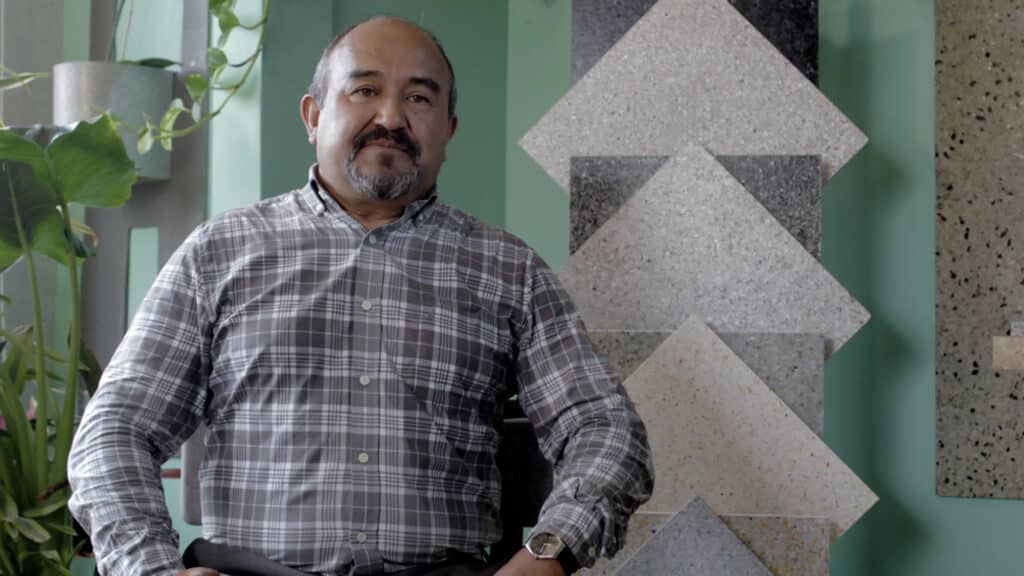
The Central University of Ecuador did a study that compared conventional methods of construction with those of Ecuaplastic. According to Edgar, the study proved that Ecuaplastic’s methods had the “competitive upper hand.”
The mere existence of Ecuaplastic is a testament to human ingenuity. If Edgar and his team’s methods were adopted on a global scale, humanity would have a far better chance of halting the current environmental crisis. “We want to eventually create buildings that have zero carbon footprint,” he said about his company’s ambitions.
Rodrigo Pacheco is feeding his community with an edible forest
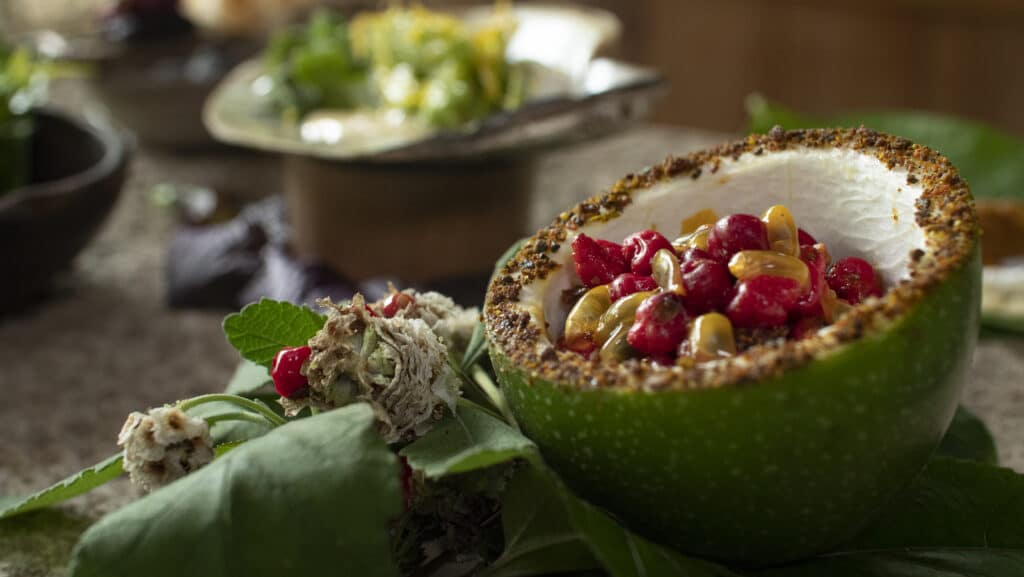
After being contestant on Netflix’s critically acclaimed cooking show The Final Table, Rodrigo Pacheco is arguably Ecuador’s most beloved chef. His restaurant Bocavaldivia is revolutionizing the culinary experience and creating a model for a more sustainable future.
Bocavaldivia is Rodrigo’s passion project, combining the two things he is most passionate about: cooking and conservation. Located in Puerto Cayo—off the coast of Ecuador—it is both a restaurant and “creative permaculture project.”
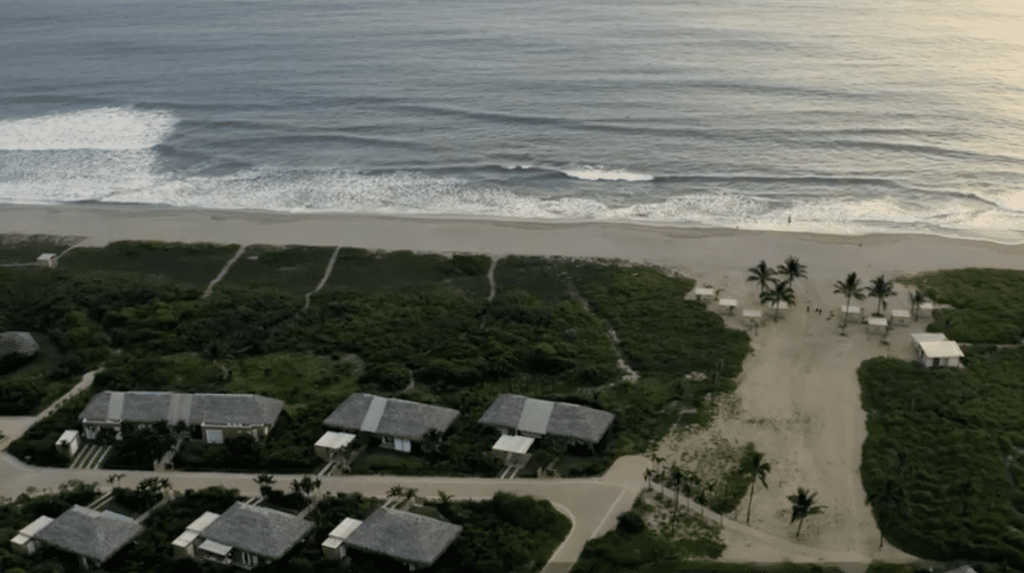
Spanning over 200 acres of land, Bocavaldivia is its own ecosystem, an “edible forest,” as Rodrigo calls it. For over a decade, he has been planting food species amongst the indigenous plants. All food at the restaurant is sourced from his man-made forest (that was once merely barren land).
Rodrigo stressed that his edible forest is not an artificial ecosystem. In an interview with CNN, he clarified, “All the elements that work in a normal forest, we try to replicate into an edible forest. They are native species… We’re just gathering all the edible species and putting them together in a place.”
Watch Rodrigo Pacheco’s feature documentary: Edible Forest: Celebrity Chef Feeds His Community
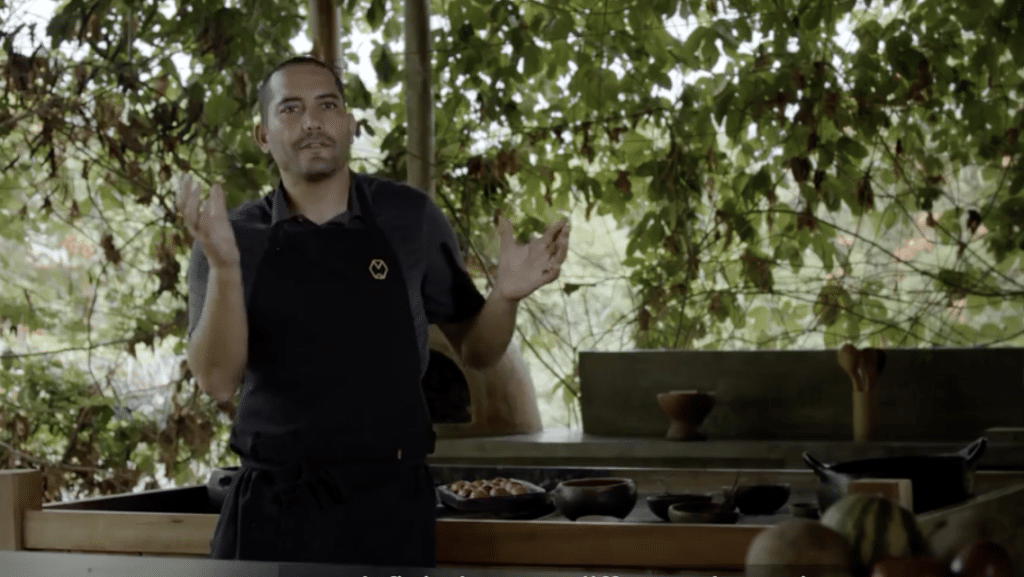
By turning once-barren land into an edible forest that not only provides food for his restaurant, but also contributes to global biodiversity, Rodrigo Pacheco is taking heroic strides to make the world a better place.
“We create an ecosystem that will last for hundreds of years,” he noted. “And when you maintain this ecosystem, you definitely see a different dynamic. We invest in the weather of the future.” By re-adapting the gastronomy practices of indigenous cultures—and moving away from industrialized food production—Rodrigo is setting the template for a more sustainable future.
Alejandro Morales is turning trash that washes up on the beach into treasure
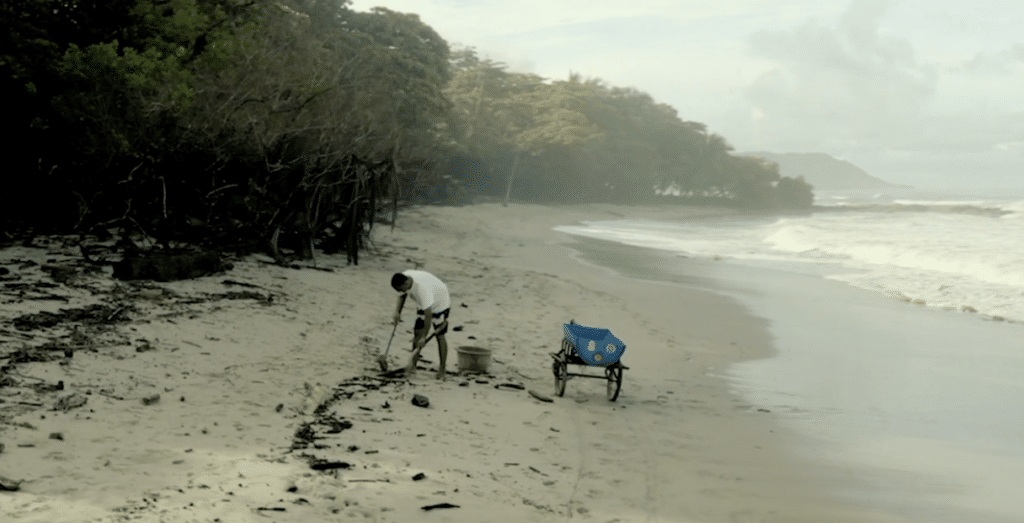
Alejandro “Che” Morales is the founder of the LECO Project, self-described as “a plastic recycling system, reusing and creating products from recycled materials.”
The organization serves Alejandro’s hometown of Santa Teresa, Costa Rica. The presence of the LECO Project has not only kept Santa Teresa’s beaches clean, but it has provided townspeople with affordable products that come entirely from the waste that Alejandro and his volunteers collect.
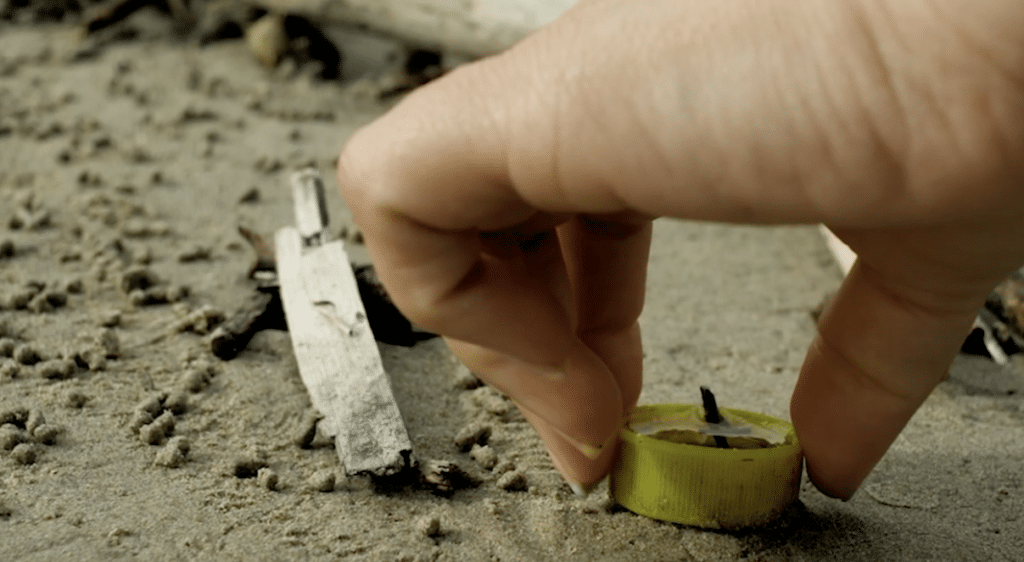
“When we pick it up,” he said, “if it doesn’t get processed, it will end up right back in the garbage, and the process will never end.”
He reached out to his good friend Thomas, and together they designed a shredding machine that turned plastic waste into flakes that could be used to make products and set up around 100 compost bins around Santa Teresa.
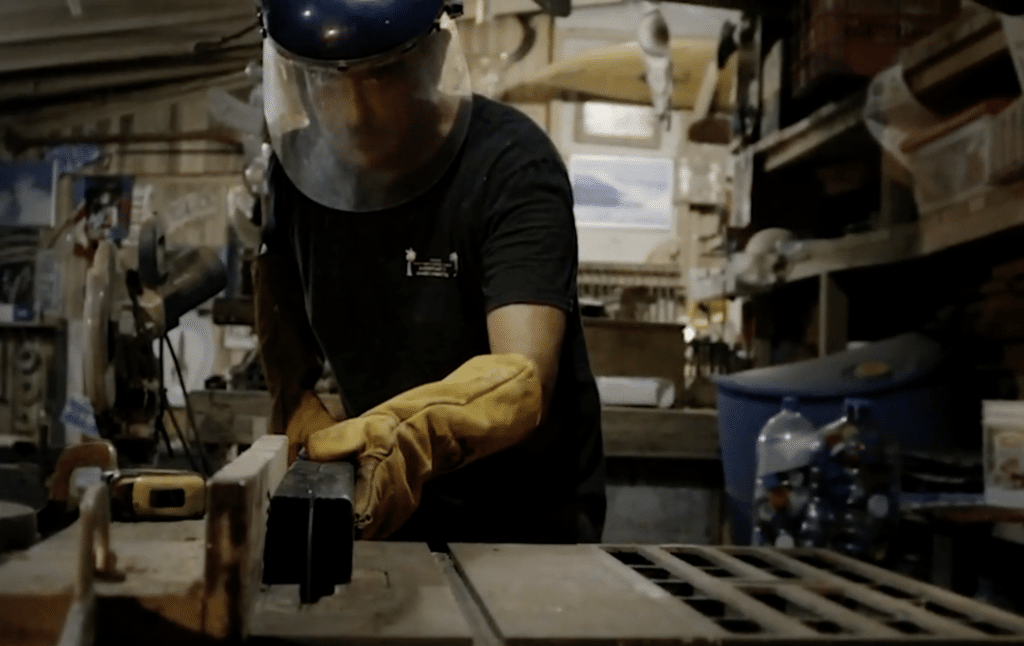
Townspeople leave their plastic recyclables in these bins, and Alejandro and his volunteers collect them and turn them into products.
Instead of making the unrealistic demand that we stop using plastics, he and his volunteers have created new ways to reuse what most would consider junk, giving new life to items that would otherwise be washed upon a shore somewhere.
Watch Alejandro Morales’ feature documentary: Turning Beach Trash Into Treasure
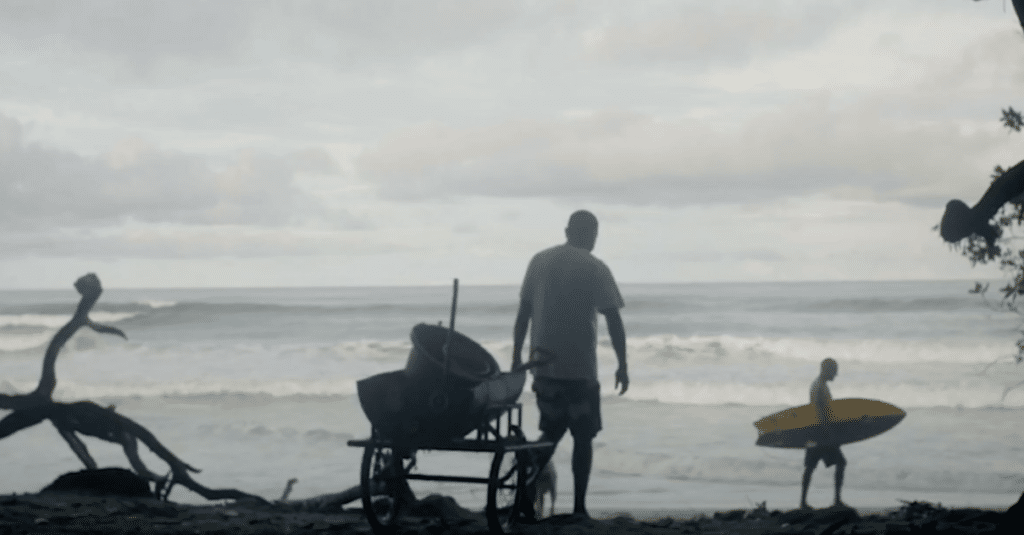
While the LECO Project can’t be responsible for saving the world, Alejandro feels happy in knowing that he is making even a minuscule difference.
“Today, the world’s most renowned soda company manufactures 1,000,000 bottle caps per minute,” he remarked. “And in the last three years, I’ve come close to processing only 900,000 bottle caps… I know that it is an unequal fight. The generation of plastic is constant. But I recycle because it feels good to me.”
Vernon Arias is bringing back red macaws from the edge of extinction
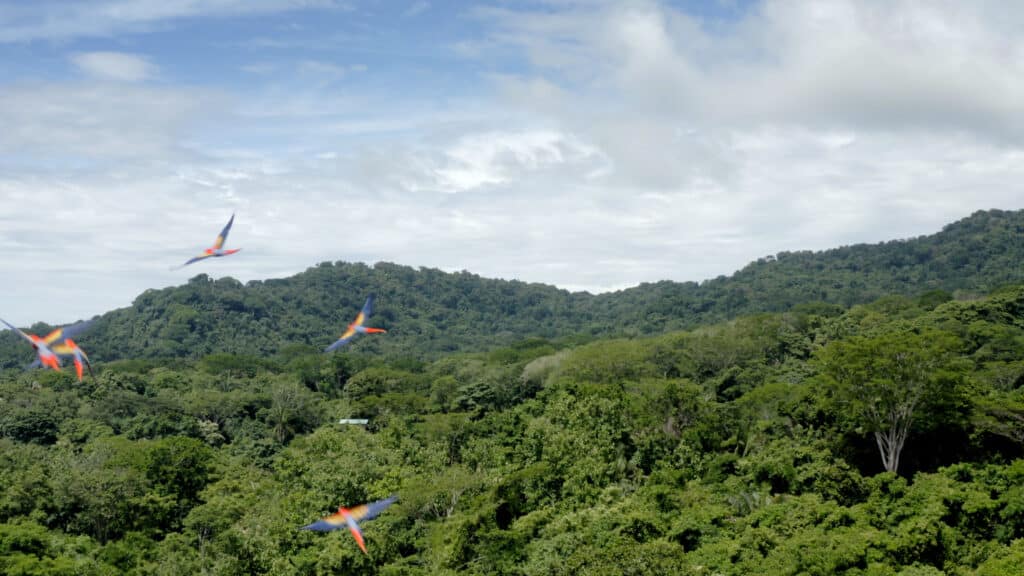
Vernon Arias is a biologist based in the town of Cóbano, Costa Rica, located in the southernmost part of the Nicoya Peninsula, a region that once teemed with wildlife. However, due to the construction of habitat-disrupting real estate, as well as the actions of poachers, much of the area’s most-beloved species are at risk of extinction.
One of those species is the scarlet macaw, a bird that is not only beautiful, but essential to the proper functioning of the ecosystem. Vernon’s mission is to repopulate the peninsula with scarlet macaws, a feat he accomplishes through his work with non-profit organization ASOPROLAPA.
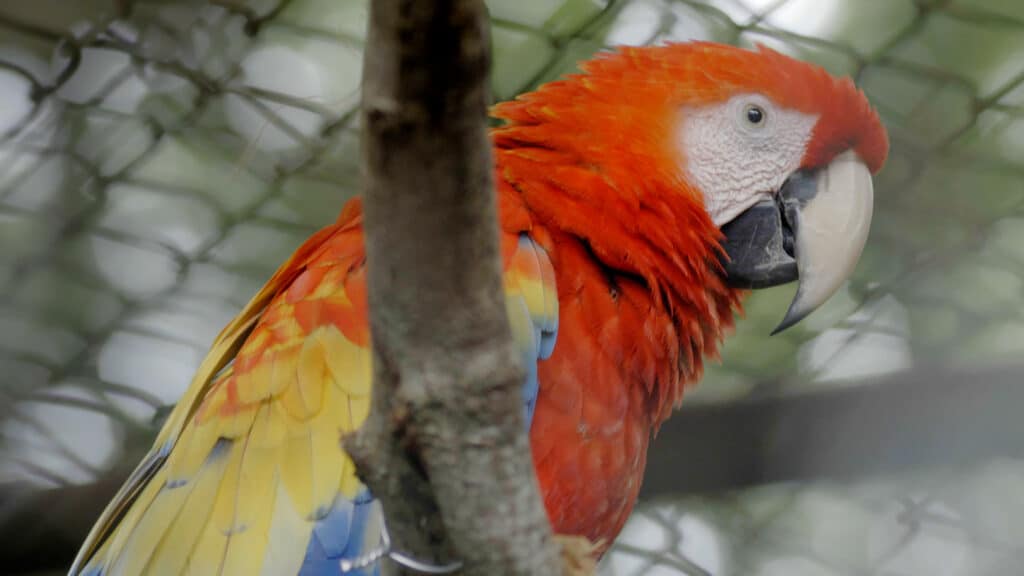
ASOPROLAPA is repopulating the scarlet macaw by instigating the reproduction process, which takes place within a hatchery. When the creatures are mature, they are released little by little into the wild.
Before releasing macaws into the wild, they place a microchip-containing ring around each bird’s claw, allowing for satellite tracking. This way, ASOPROLAPA can trace the movements of released birds, learning more about their migratory process.
Watch Vernon Arias’ feature documentary: Bringing Back The Scarlet Macaw From Extinction
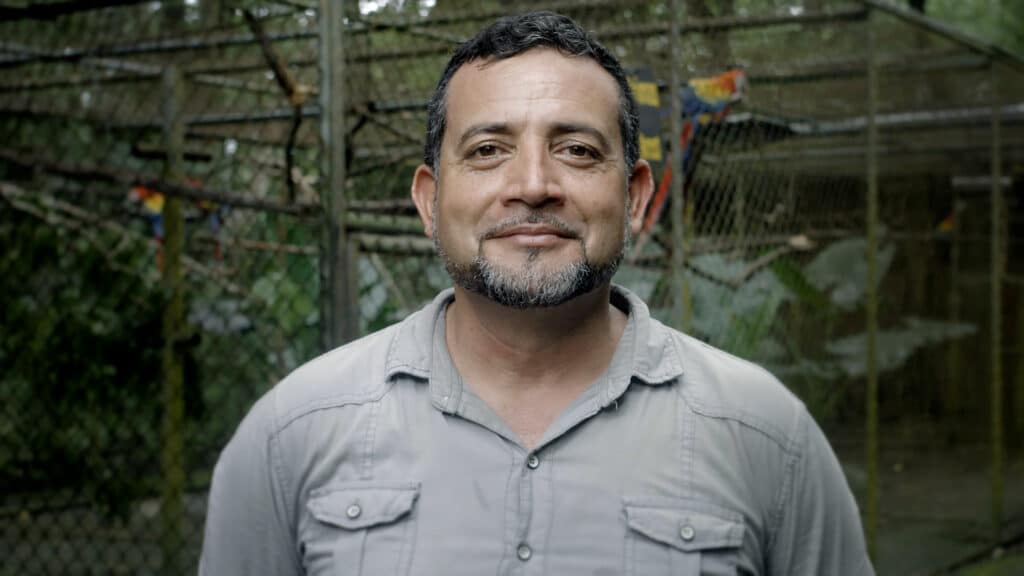
Even the birds that cannot be released into the wild, due to disabilities, are used to educate the future generations of Costa Ricans. Vernon and his team also perform school seminars, in which they teach the children about the biological role of the scarlet macaws and the importance of conservation.
Currently, ASOPROLAPA has released approximately 200 scarlet macaws into the wild, which is nearly half of Vernon’s goal of 500. The birds have reproduced, and their habitation has increased tourism, boosting the local economy and the Nicoya Peninsula’s residents’ quality of life.
Michel Guerrero is protecting giant manta rays
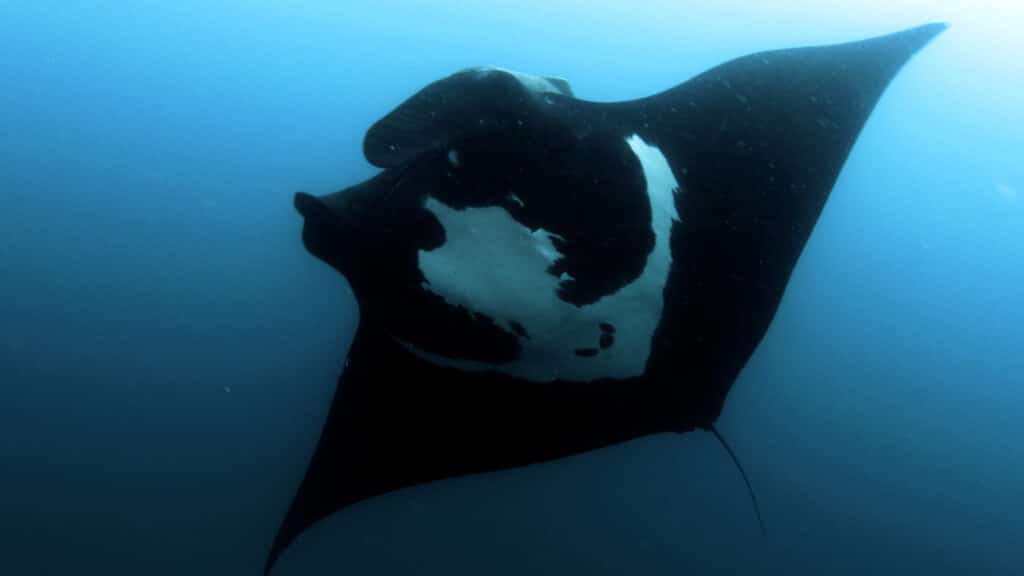
Michel Guerrero is a well-respected marine biologist whose research of giant manta rays has led to a wider breadth of public knowledge about the endangered species through his work with El Fundación Megafauna Marina del Ecuador (Marine Megafauna Foundation of Ecuador).
Michel has devoted nearly 30 years to studying the giant manta ray. And while his research has contributed to a greater public knowledge of the creatures’ behaviors, it has also opened lawmakers’ eyes to the giant manta ray’s importance.
Watch Michel Guerrero’s feature documentary: Protecting Giant Manta Rays
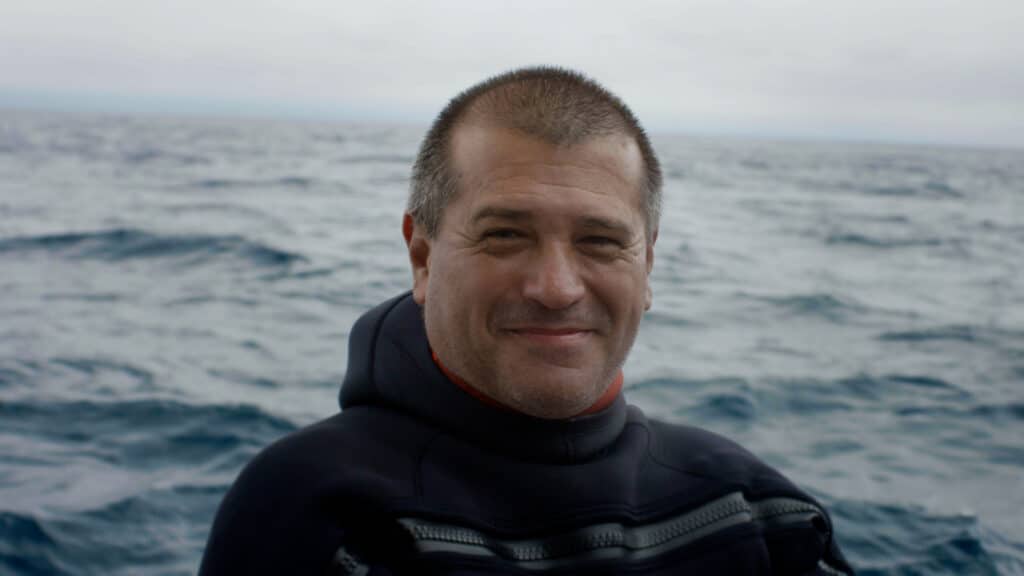
According to NOAA Fisheries, giant manta rays are “crucial to the ecosystem. Manta rays control plankton abundance and diversity and regulate nutrient cycling. Their feeding and diving behavior creates a valuable ecological connection between the surface ocean and the deep sea.”
Michel and his team share their findings with local lawmakers, hoping that they will pass measures to protect the species from poachers. Giant manta rays are hunted for their gill rakers, which some claim boost the immune system by enhancing blood circulation. Because of his and his team members’ work, legislation has been passed that has benefited the species.
Missionary Antonio Polo built a town to be self-sustainable
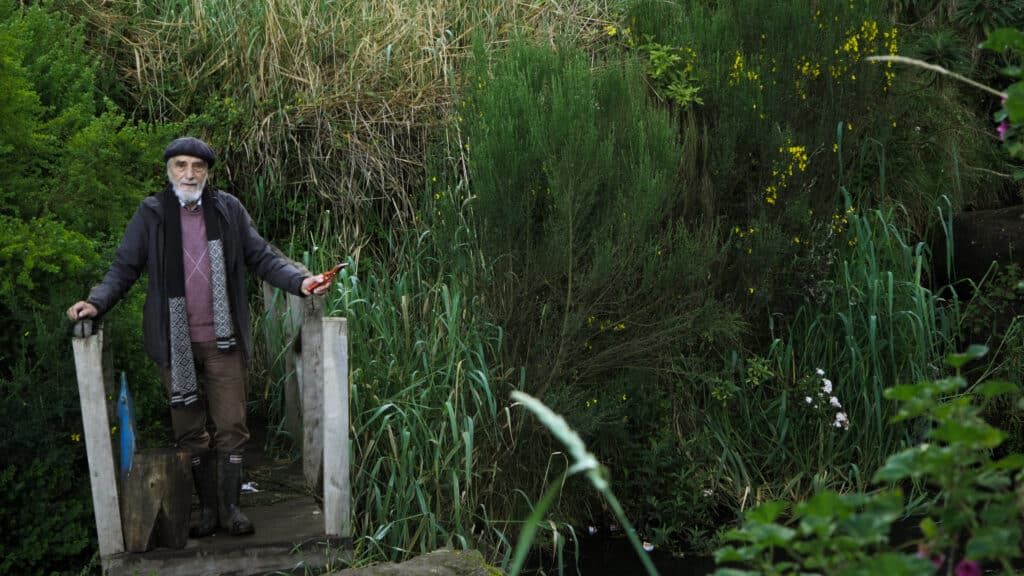
Father Antonio Polo is a Catholic missionary whose accomplishments extend far beyond the spread of religion. An Italian native, he came to Salinas, Ecuador in 1970 to provide assistance to locals who were impoverished due to harsh conditions imposed by their affluent landlords.
What was supposed to be a four-month stay turned into 50+ years, as Antonio has devoted his life to creating co-operatives within the village, providing its residence with self-sustainability. Because of Antonio, Salinas’s natives have been able to make livings for themselves and build a thriving community based on solidarity, rather than servitude.
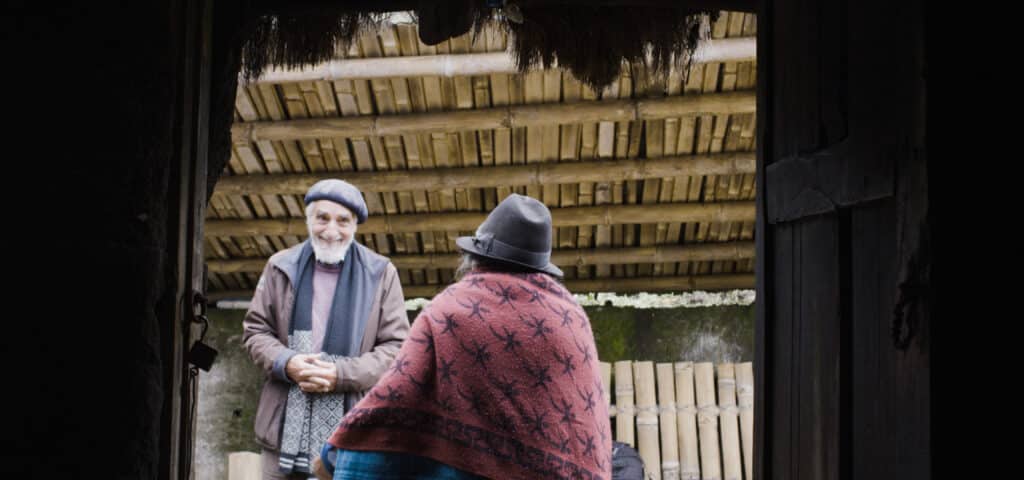
When Antonio arrived in Salinas, the extent of the village’s problems was immediately apparent to him: “We arrived here after traversing a large hill, as there was no road into the village,” he said. “I saw about 30 small shacks… a stream of smoke was coming out of each shack, each stream forming a single column that rose to the sky. I saw this as a message. I interpreted it as a calling…”
Salinas’s problems prior to the arrival of Antonio can be attributed to two primary factors: the collapse of the salt-mining industry, as well as the oppressive nature of the village’s landlords, who were taking advantage of the Salinas’s isolation, by charging residents copious amounts of rent money.
Watch Antonio Polo’s feature documentary: A Mission To Build Salinas, Ecuador
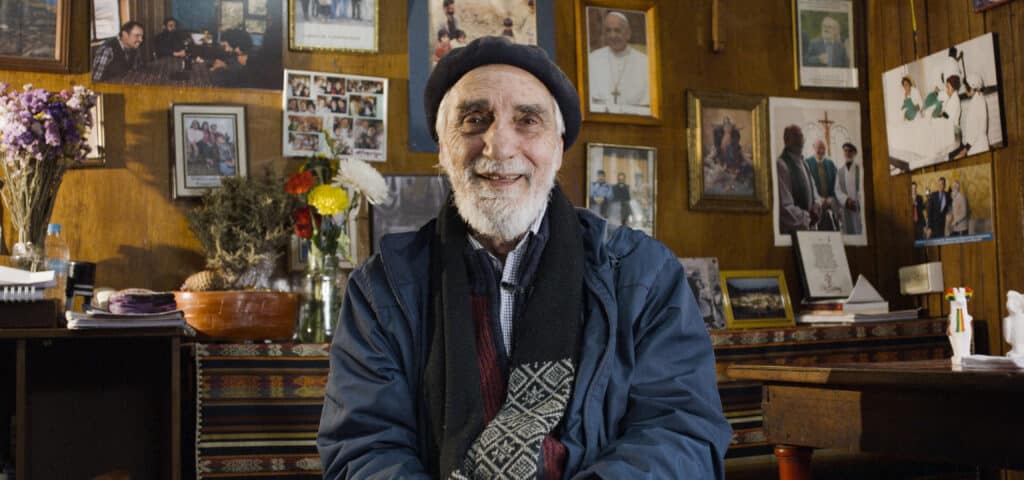
He discovered the residents knew how to make cheese for the landlords and helped them turn the process into a thriving co-op that began selling their wares Ecuador’s largest city and eventually internationally under the brand name Salinerito.
Salinerito has expanded to include several solidarity-based companies that have turned Salinas into a thriving independent village that is able to provide residents with the funds and resources needed lead happy, healthy lives that are free of their former oppressors.



